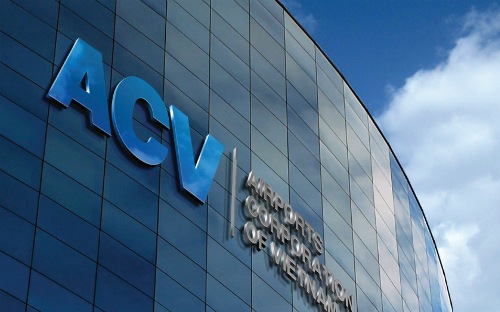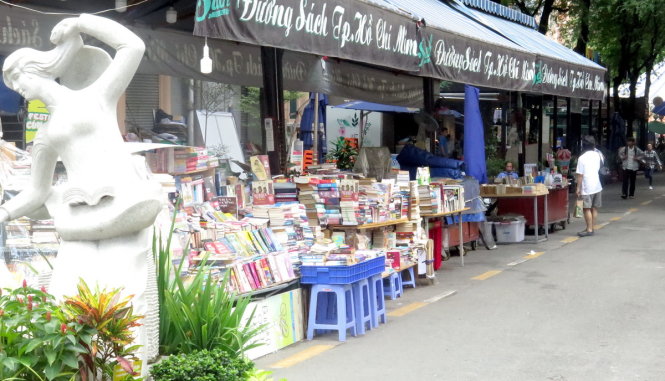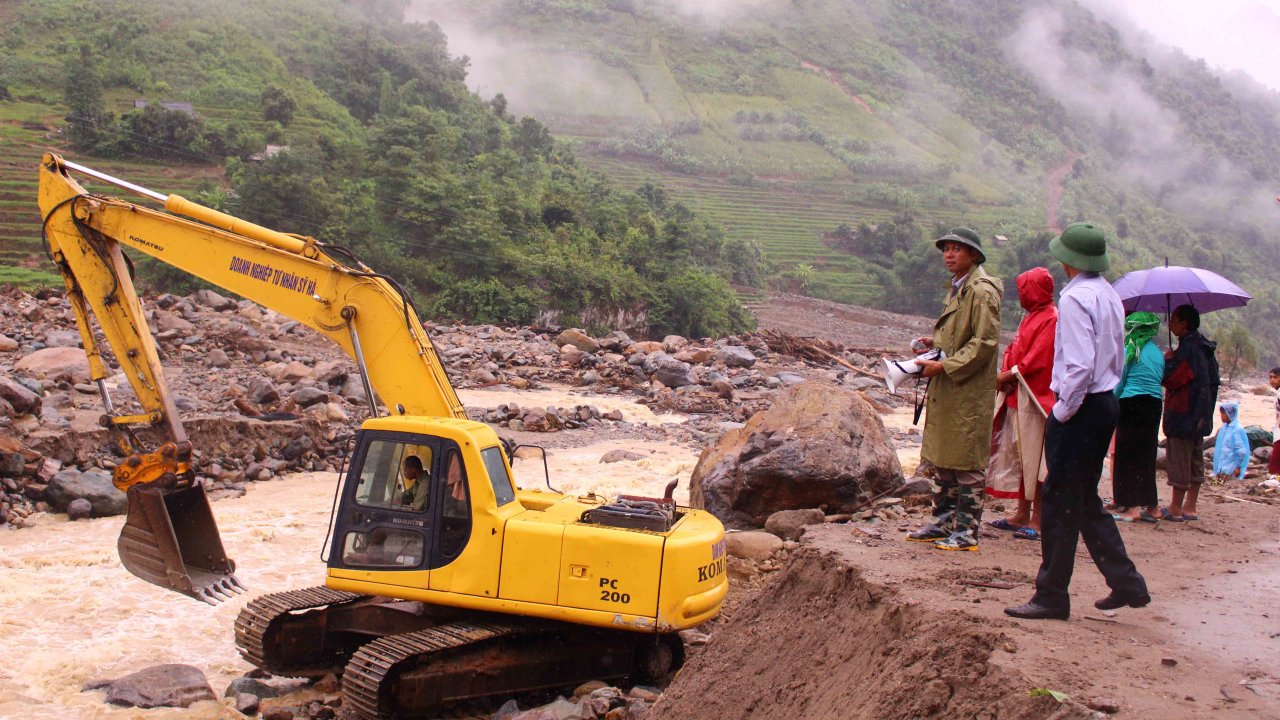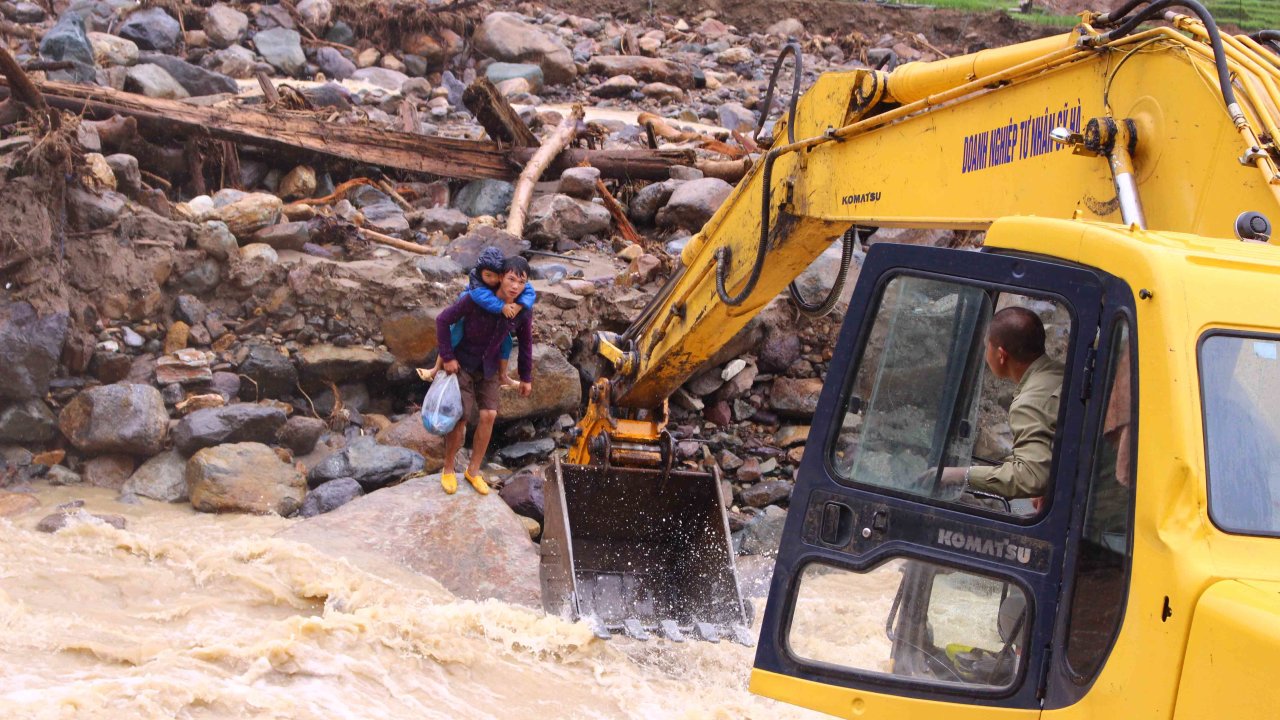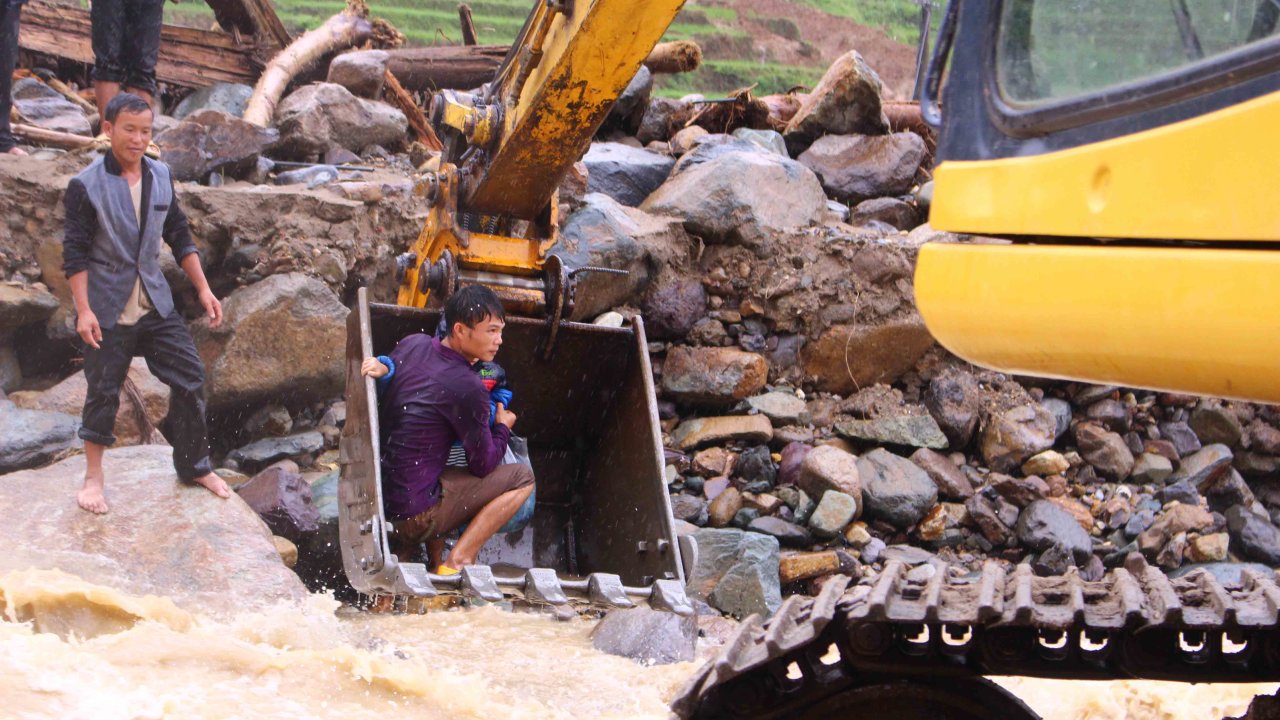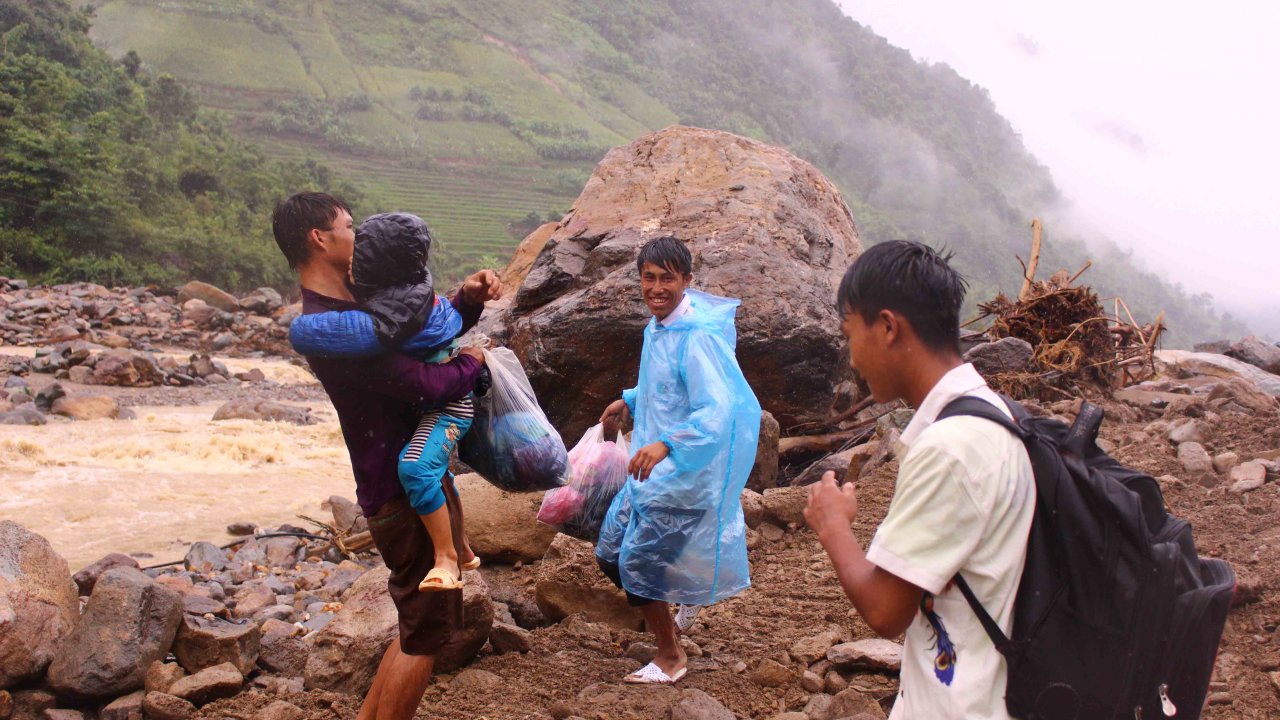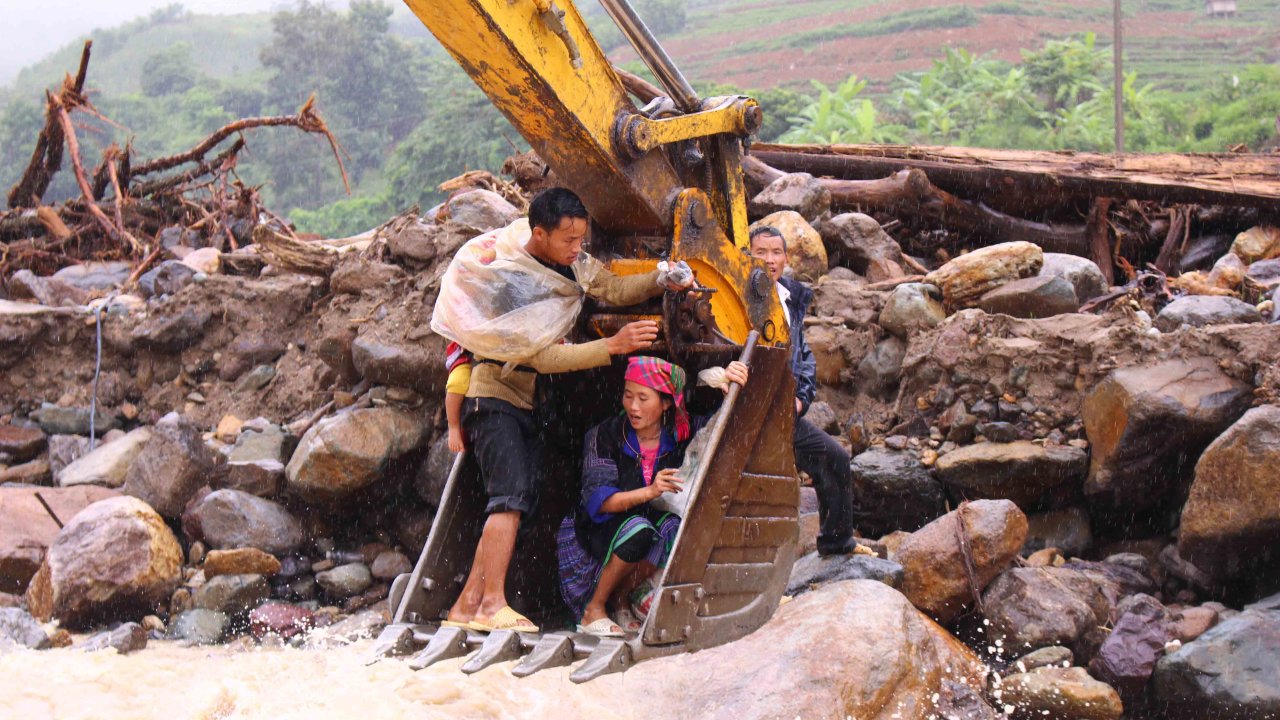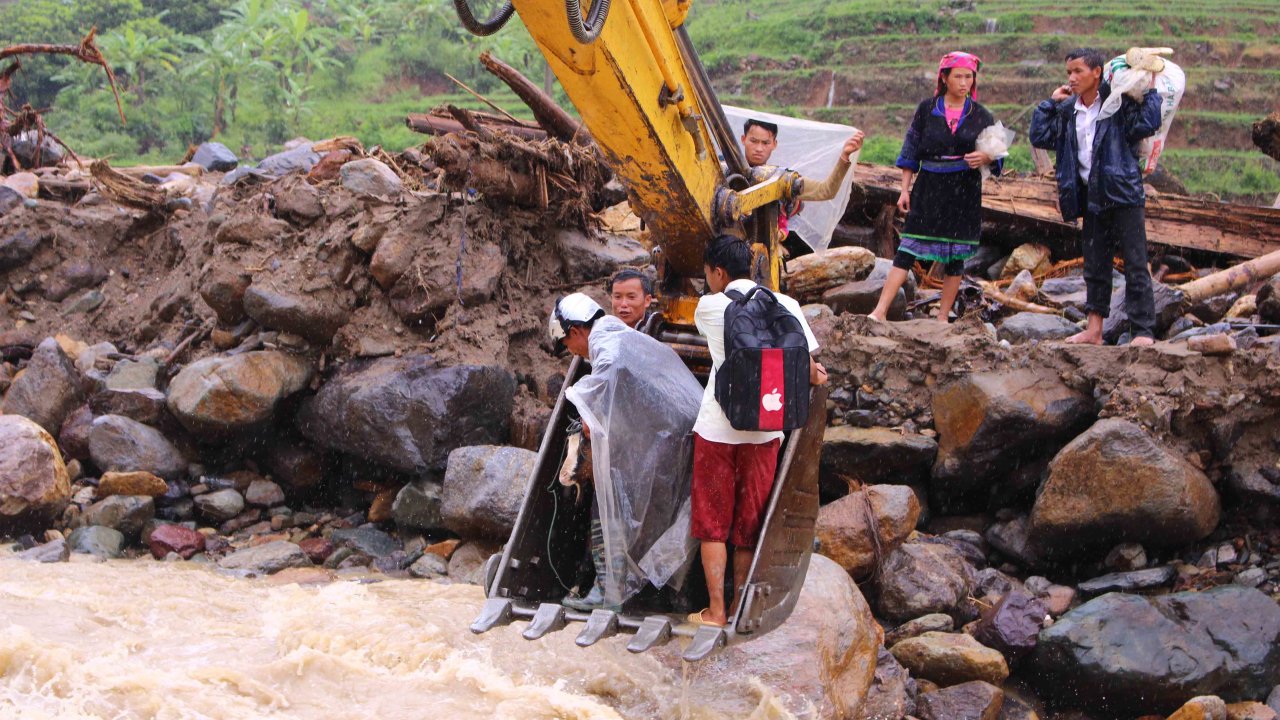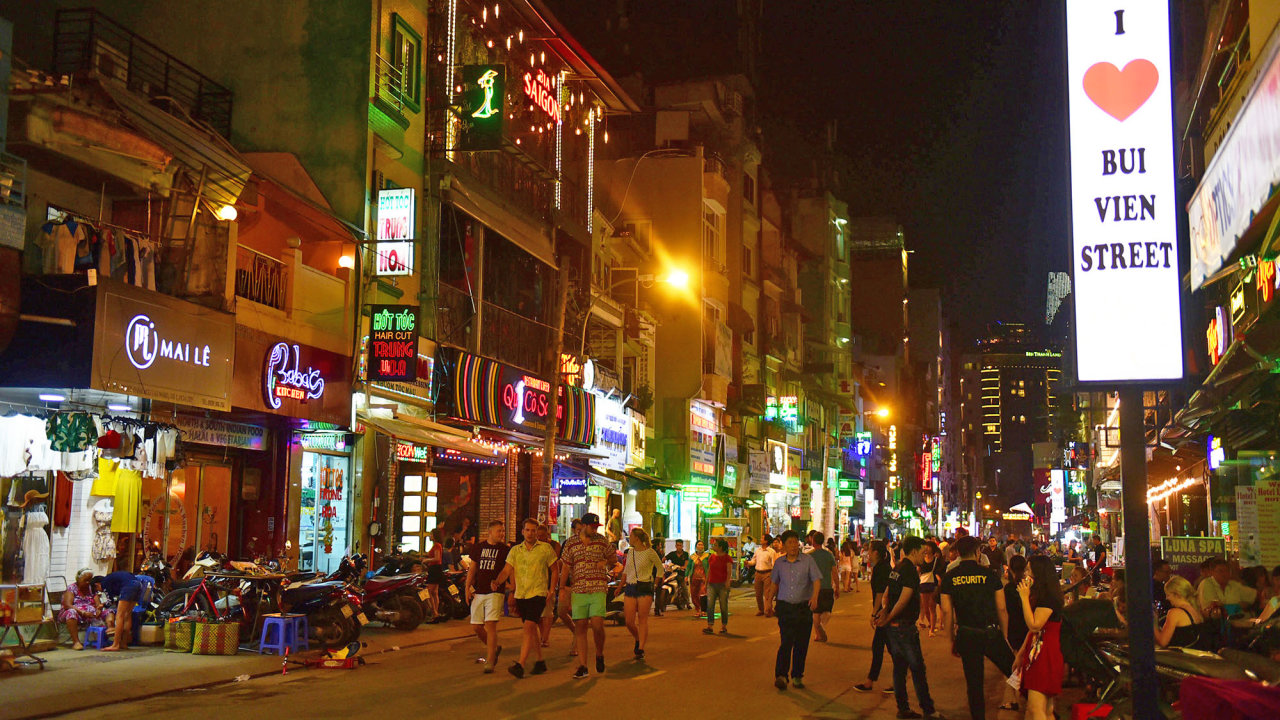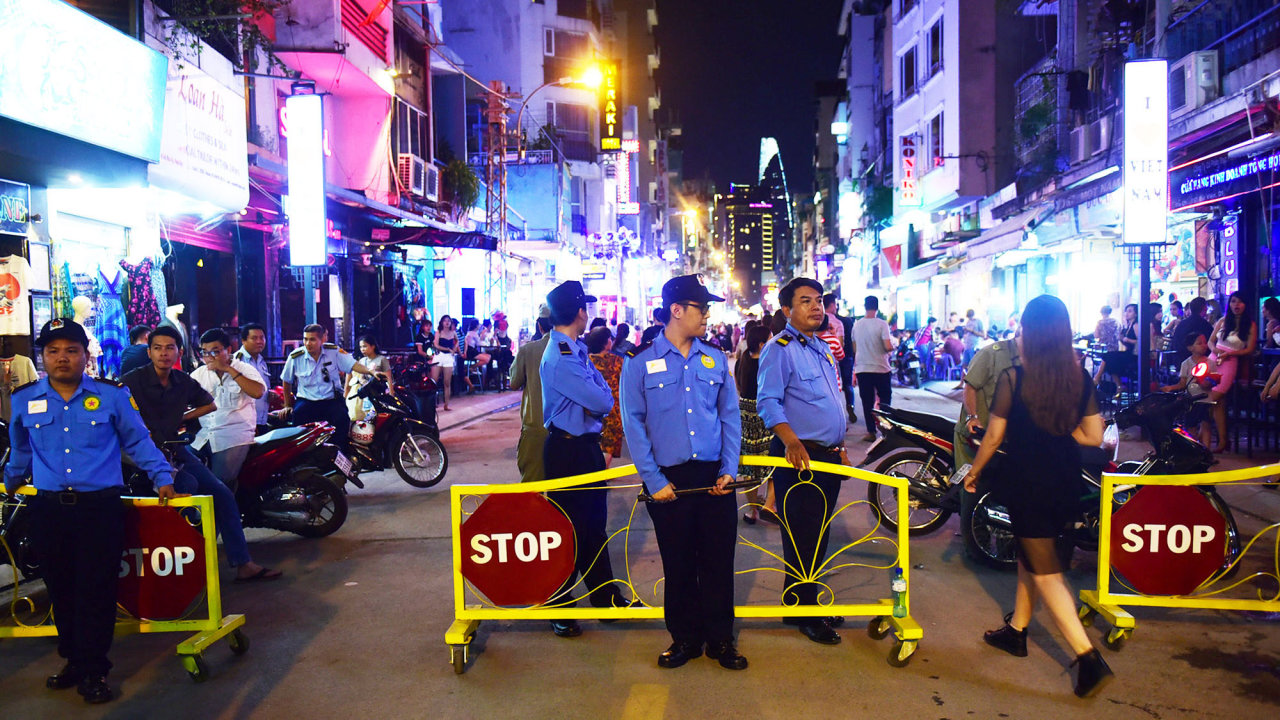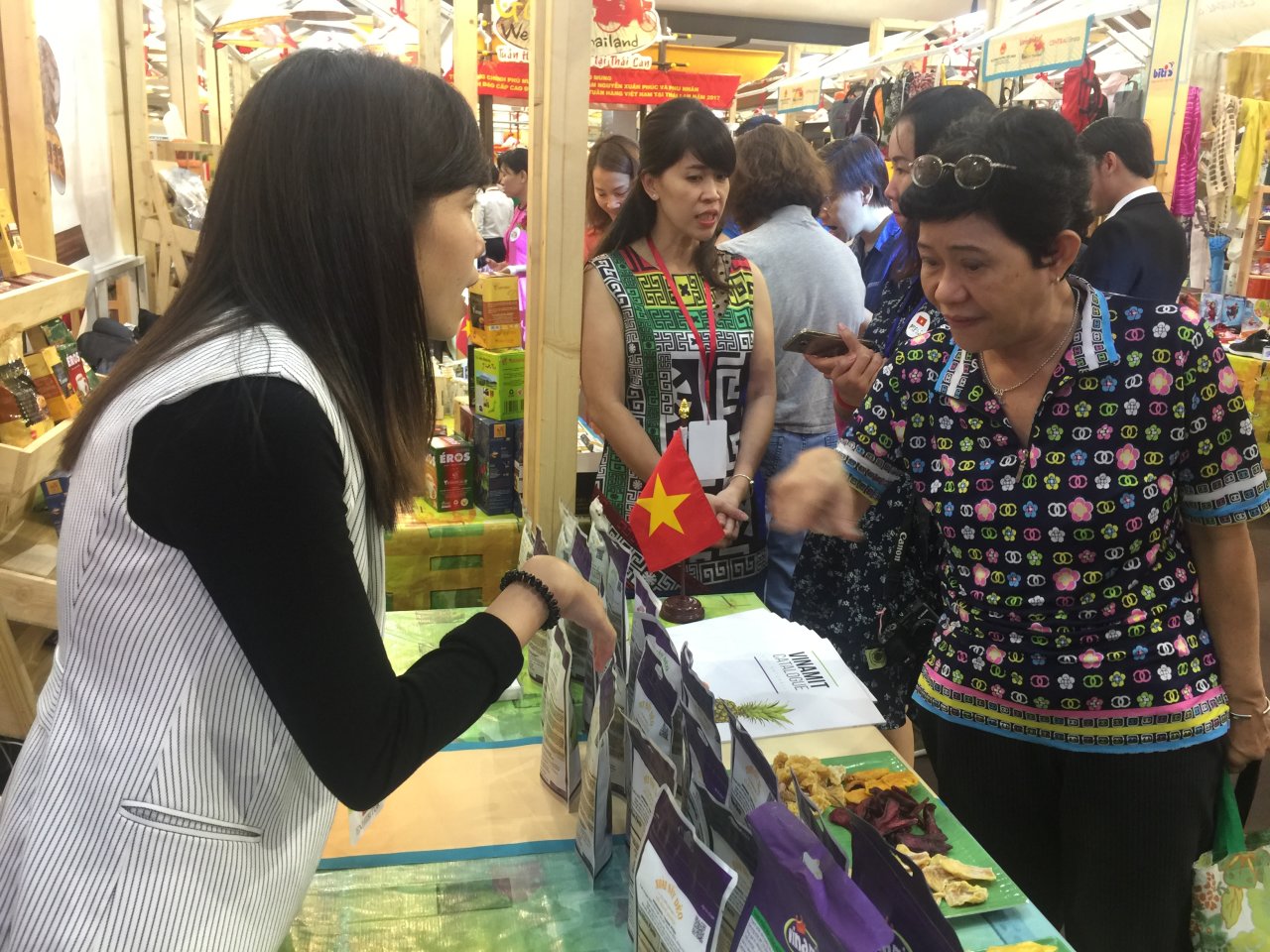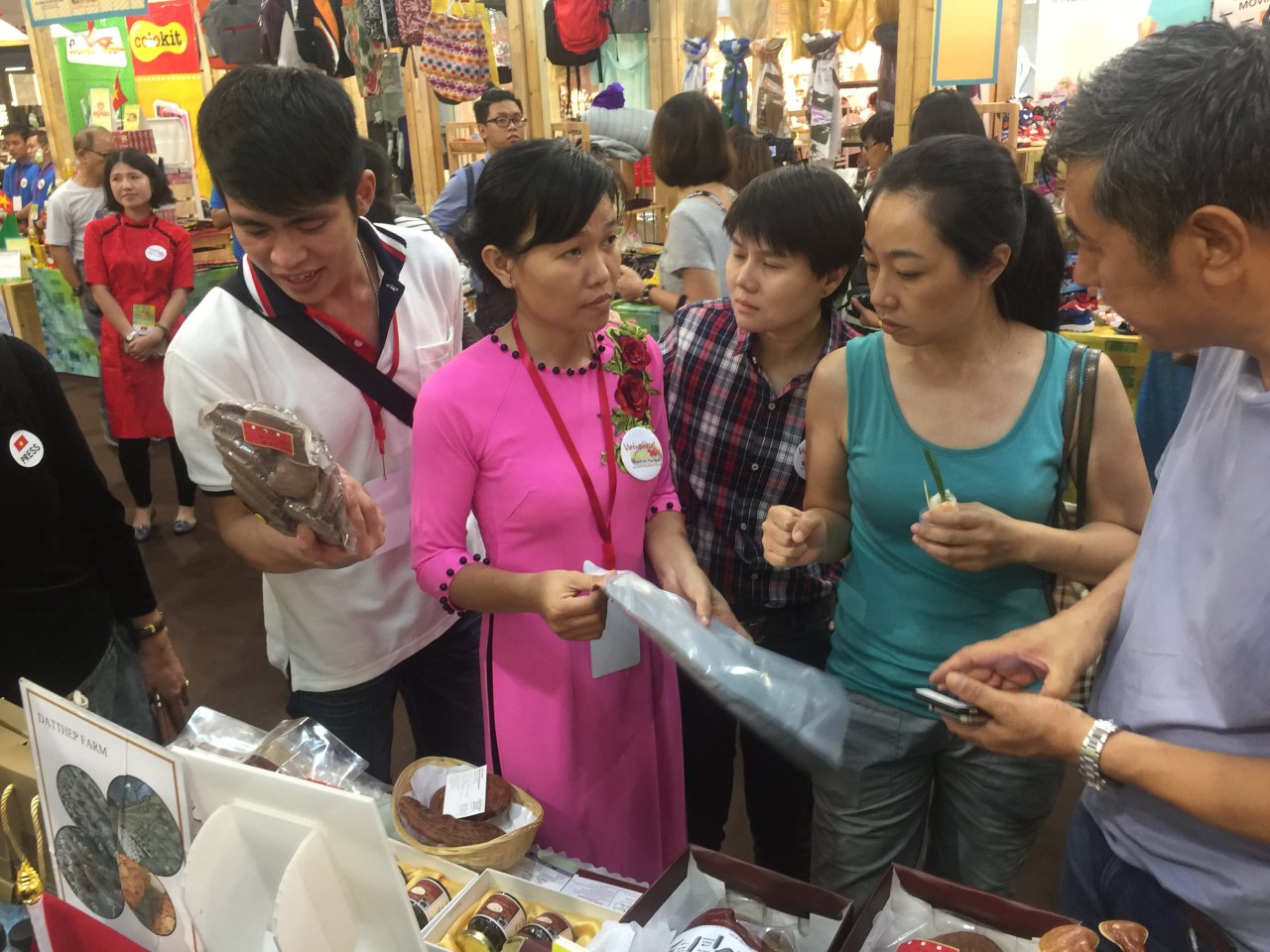Social News 14/8 Ben Tre Province culture, tourism week opens Aug. 29  The Ministry of Culture, Sport and Tourism has announced that the second annual Mekong Delta province of Ben Tre Culture and Tourism Week will open August 29 and run through September 4. Planned events for this year include a photo exhibition showcasing the province’s socio-economic achievements, tourism seminars and workshops, along with a bevy of food, music, dance, arts, craft, sports and cultural events. In short, there’s a little bit of something for everyone in a fun filled family oriented weeklong extravaganza that is sure to delight, said the Ministry. Danang pulls out all the stops for APEC Summit 2017 City of Danang officials are leaving no stone unturned as they enter the final stretch in the preparations for the upcoming APEC Summit 2017 set to transpire November 6-11, says Party Committee Secretary Nguyen Xuan Anh. Workers are now scurrying to put the finishing touches to the International Press Centre, which will be the venue for an estimated 2,000 journalists and other members of the media from all over the globe. Upgrades and improvements to the Tien Son Sports Palace are also nearing completion while the Danang Airport and underground tunnel to the west of Han River have essentially been completed. However, the Dien Bien Phu-Nguyen Tri Phuong underground traffic tunnel is still far from complete and a considerable amount of work on Nguyen Van Linh and Vo Van Kiet streets remain unfinished. Arrests shutdown major Lao-Vietnam drug pipeline At a press conference on Friday, August 11, police in the central province of Nghe An announced what they called the closure of a major heroin and ecstasy pipeline from Laos to Vietnam. In total, the police have arrested four people relating to the operation, which also resulted in the seizure of thousands of pills of ecstasy, heroin, a motorbike and two mobiles, among other items. The alleged ring leaders – Nguyen Dinh Minh and Tran Van Luong – face numerous charges including delivery of a controlled substance, corrupt organizations, and dealing in the proceeds of unlawful activity. Major rivers endangered by hydropower dams, sand mining in central Vietnam Vu Gia- Thu Bon, one of central Vietnam’s largest river systems, is being devastated by hydropower and sand exploitation operations A major river system in the central Vietnamese province of Quang Nam is being devastated by hydropower and sand exploitation operations, putting the welfare of local residents in serious jeopardy. Vu Gia- Thu Bon, one of central Vietnam’s largest river systems, is being overwhelmed by the 40 hydro-electric dams in its upstream areas. The situation is equally grave downstream, where aggressive sand mining activities are ravaging the river’s ecosystem. The sand mines dotting the two rivers are surrounded by dozens of barges working endlessly at full capacity. One of these mines, located near the Ha Nha Bridge in Dai Dong Commune, Dai Loc District, has caused its fair share of devastation to the area. According to Ho Binh, a local resident, the mine area was established five years ago. “A large section of the riverbank collapsed during last year’s flood season. Authorities only shut down the activity after local citizens complained about the issue,” Binh recalled. After the incident the burden of preventing future accidents fell on local residents, who now regularly fortify the riverbank with sandbags to prevent future collapses in case an upstream hydropower plant releases water and floods the downstream area. Fifteen kilometers away, more than 20 barges wait for their turn to load the exploited sand and carry their haul to waiting trucks. Hundreds of vehicles enter and exit the area each day to pick up sand and transport it towards the central city of Da Nang, Le Binh, a local resident, stated. In Dai Loc District, each kilometer of embankment along the Vu Gia- Thu Bon river system costs VND25 billion ($1.09 million) to maintain. Meanwhile, the income generated from the 18 sand mines located within the district is a meager VND6 billion ($262,719). The severity of the situation is so far reaching that it not only affects the nearby environment, but has also spread to Hoi An, a famous tourist city whose famous beach, Cua Dai, is facing serious subsidence issues. Nguyen The Hung, vice-chairman of the Hoi An People’s Committee, said that some VND140 billion (US$6.1 million) had been spent on mitigating riverbank subsidence in the locality. During a recent meeting held to discuss the issue, Vu Thanh Ca, a member of the Scientific Research Institute of Sea and Islands, asserted that the subsidence that has been occurring at Cua Dai Beach since 2014 is due to human activity, rather than climate change. The Vu Gia- Thu Bon river system is the main source of sand for the coastal area around Hoi An, Ca stated, adding that hydro-electric plants and sand exploitation directly impact the area. According to Bui Van Ba, an official from the Quang Nam Department of Natural Resources and Environment, about 35 legal sand mines currently operate along the Vu Gia- Thu Bon. The rampant subsidence along the river banks is most likely being caused by illegal exploitation, Ba added. In an attempt to manage the issue, local authorities have ceased granting permits to new mining units and have put a pause on extending current licenses. A careful evaluation of the current situation will be conducted to determine the number of sand mines that can operate in Quang Nam without posing a danger to the people or environment, said Dinh Van Thu, chairman the provincial administration. The environment department will also be tasked with inspecting existing mines and the Department of Police will be responsible for dealing with illicit exploitation, Thu stated. Vietnam ranks 74th in global internet speed: report With download speed of 5.46 megabytes per second, Vietnam's internet speed has been ranked 74th out of 189 countries and territories in a recent global survey of broadband speeds compiled by Cable.co.uk, a U.K. broadband, TV, phone and mobile provider. Singapore topped the world with average download speed of 55.13Mbps, followed by Sweden and Taiwan who achieved 40.16Mbps and 34.4Mbps speeds respectively. War-torn Yemen came in last at an average speed of just 0.34Mbps. Vietnam's average broadband speed was recorded 10 times lower than Southeast Asian neighbor Singapore, according to the survey. However, the country still managed to trump six other countries in the region. The data was collected over 12 months from May last year, analyzing 63 million broadband speed tests worldwide. The top 20 fastest-performing countries were located in Europe and Asia. While the slowest internet suppliers were mostly in Africa. Downloading an HD movie of 7.5GB in size would take 18 minutes and 34 seconds in league-topper Singapore, while it would take over three hours in Vietnam, according to the survey. Last year, Vietnam’s average internet connection speed clocked at only 5.1 megabits per second, ranking 64th globally and near the bottom in the Asia Pacific region, according to an internet connectivity report from the content delivery network Akamai. Nearly 49 million people in Vietnam, or more than half of the country’s population, are online. The country is notorious for its unstable internet connection, with undersea cables making headlines whenever they break (again). Tornado rips apart 40 buildings in central highlands of Vietnam A tornado in the central highlands district of Bao Lam in Lam Dong Province damaged an estimated 40 homes and commercial buildings, but caused no injuries on Friday, August 11. The tornado formed midday, lasted about 20 minutes and was accompanied by hail, said residents. The wind was strong enough to tear the sheet metal off the roof of homes, storage sheds and other structures and scatter pieces of wood around the landscape, the residents noted. Local officials also reported substantial crop damage in addition to severe damage to an electrical power station and local kindergarten. Thai Binh: Poor children get free heart checkups in two-day event Free heart disease screenings were given to poor children under 16 years old in northern Thai Binh province on August 12 as part of a charity project “Trai tim cho em” (Operation Healthy Heart). Over 1,000 children were provided check-ups at the Thai Binh Paediatrics Hospital in the morning. According to the hospital’s Director Doctor Nguyen Thi Minh Chinh, Thai Binh is among provinces with high prevalence of children suffering from congenital heart defects. The Operation Healthy Heart gave an opportunity for those from difficult backgrounds to receive counselling and treatment for the diseases. The programme has provided free life-saving surgeries for more than 100 impoverished children in the province to date. It was initiated by the Viettel Group and Vietnam Television in 2008 with an aim to support surgery need of disadvantaged children under 16 born with heart deformities and help improve local capacity to offer heart screenings to children. Since then, the Operation Healthy Heart has organised 35 screening events across the country with over 47,000 children diagnosed with congenital heart diseases and 3,500 of them given surgeries. It has also raised 120 billion VND in funding for such surgeries. This was the first time a free heart check-up event held in Thai Binh and it will run until August 13. Hanoi to ban taxis on multiple streets during rush hours The Hanoi transport department has published a list of streets and thoroughfares which taxis will be prohibited from entering during rush hours starting this month. Workers are currently busy placing no-entry signage on the chosen streets, done as part of the municipal authorities’ bid to reduce traffic congestion in the Vietnamese capital. The no-taxi ban is applicable to Mai Xuan Thuong and Hoang Hoa Tham Streets, the section from Mai Xuan Thuong to Ngoc Ha, during 6:30 am - 8:30am and 4:00 pm – 7:00 pm from Monday to Friday, according to the transport department. Taxis are also prevented from going through Chuong Duong Bridge from Nguyen Van Cu Street to the city’s downtown area between six and nine in the morning on weekdays. From 6:00 am to 8:00 pm, cabs will be restricted from entering the intersection of Nguyen Co Trach and Ho Tung Mau Streets in Cau Giay District. Also during this timeframe, both taxis and conventional automobiles are not allowed to go on Xuan Thuy Street, the section from the Xuan Thuy – Pham Hung Intersection to the Xuan Thuy – Tran Thai Tong Intersection. From 6:00 am to 9:00 am every day, the no-taxi ban applies for the section from Nhon into the city’s downtown through Dien Bridge. Between 6:00 am and 9:00 am, and 4:30 pm and 7:30 pm from Monday to Friday, taxis are banned from entering De La Thanh and Kham Thien Streets. From December 25, taxis will not be allowed to drive through Giang Vo, Lang Ha, Le Van Luong Streets during the above timeframes. This restriction aims to serve the new bus rapid transit (BRT) route going on these roads. The Hanoi transport department has previously suggested that the no-taxi ban be applied to ride-hailing services such as GrabCar and Uber. Another 100 trees will fall in Saigon as city wants to clear traffic near airport Ho Chi Minh City’s transport department has announced a plan to chop down more trees, this time to give way to heavy traffic near Tan Son Nhat Airport. The plan is to fell 102 trees on Hoang Minh Giam and Hoang Hoa Tham streets stretching two to three kilometers from the international airport, local media reported. Saws will be brought out onto the streets between October and December. Another 21 trees there will be moved to a garden in the city. Authorities said the move will increase road capacity near the airport, where traffic jams currently last for hours every day, despite recent opening of several overpasses. Trees are frequent "victims" of urban development in Vietnam. In Ho Chi Minh City, the tree chopping spree has been going on non-stop for the past three years since it started work on its first metro line. Hundreds have been felled so far. The city is set to move and cut down 300 trees along Ton Duc Thang, which has one of the most beautiful canopies in the city, to make way for a metro station and a new bridge. Hanoi in June also announced to cut down 1,000 decades-old trees for road expansion, after having cleared many for other road projects. Dak Nong offers free books for poor ethnic students More than 30,200 poor ethnic minority students in the Central Highland province of Dak Nong have been given free textbooks for the 2017-2018 school year. The provincial School Equipment & Book Co. Ltd coordinated with the Departments of Education and Training and school administrations carried out the programme with a total cost of about 14.4 billion VND (633,600 USD) sourced from the local budget. Director of the company Ngo Xuan Ha said the programme is to implement a resolution issued by the provincial People’s Council on supporting ethnic minority students from poor and near-poor households from the 2016-2017 to 2020-2021 school years. Dak Nong is now home to 40 ethnic groups. In the 2017-2018 school year, the province has over 125,000 students, including 42,000 from ethnic minority groups. Indian Cultural Festival in full swing in Thanh Hoa Myriads of art troupes and thousands of visitors attended the Indian Cultural Festival which took place at the FLC Sam Son Resort Complex in the central province of Thanh Hoa on August 12. Stellar performances featuring Indian culture were brought to the festival-goers, including drama on Sita- a character in Ramayana epic, Indian songs like Aggheni Janee natu, Kuch Na kaho, Dam mara Dam as well as virtuoso concerts. In addition, the visitors had chance to enjoy various Indian cuisines made by five-star chefs at the food night market. With more than 1,000 rooms at the FLC Sam Son’s hotels and villas as well as a five-star golf course, indoor and outside swimming pools, spa, restaurants and bars, the complex has been a hot destination this summer. A line up of cultural events will be organised on every Sunday of August and September at FLC Sam Son complex such as cultural festivals of Russia, the US, Japan, the Republic of Korea and China. Vietnamese Embassy in Laos supports flood victims at home The Vietnamese Embassy in Laos and other agencies of Vietnam in the country have raised a fund worth 2,300 USD in support of flood victims in the homeland. Minister-Counsellor of the Vietnamese Embassy in Laos Nguyen Thanh Tung handed over the donation to Tran Thanh Man, President of the Vietnam Fatherland Front (VFF) Central Committee, in Vientiane, Laos, on August 12. The fund aims to help people in northern mountainous provinces hit by the recent floods promptly overcome consequences of the natural disaster and stabilise their lives, Tung said. VFF President Man said the flooding has caused great human and property losses in the localities. The Vietnamese community in Laos is also implementing a range of activities to assist the flood victims at home. According to the Central Steering Committee for Natural Disaster Prevention and Control, by August 7, heavy rains and flash floods had claimed 26 lives and left 15 others missing and 27 injured. About 230 houses had been swept away or collapsed while 245 others had been damaged and 340 hectares of rice had been submerged by floodwater. Nearly 400 households had had to leave their homes to safer places. The intense floods had also eroded over 25,000 cubic metres of national highways, 117,706 cubic metres of provincial and district roads; damaged 145 irrigation works and 2,072 metres of river dike, causing about over 940 billion VND (41.36 million USD) in economic losses in the region. Cambodian People's Party delegation visits Bac Ninh A delegation of the Cambodian People’s Party (CPP) led by Chairman of the CPP Central Committee’s Inspection Commission Nay Pena visited the northern province of Bac Ninh on August 11 as part of the delegation’s official visit to Vietnam. During talks with secretary of the provincial Party’s Committee Nguyen Nhan Chien and other local senior officials, Nay Pena, who is also First Vice President of the Cambodian Senate, said Cambodia always bears in mind the help and support Vietnam has given to Cambodia during the struggle for national liberation and escape from the Pol Pot genocidal regime, as well as during the cause of national reconciliation, construction and defence. The host pledged that Bac Ninh province will continue making practical contribution to fostering and traditional friendship and comprehensive cooperation between the two nations. On the occasion, the delegation visited the Den Do relic site and Dong Ky wood carving village in Tu Son district. Work starts on bridge at Lao Bao-Densavan border gate Construction of Xa Ot bridge at Lao Bao-Densavan international border gate between Vietnam’s central province of Quang Tri and Savannakhet province of Laos kicked off on August 11. The event forms part of activities marking the 55th founding anniversary of Vietnam-Laos diplomatic ties (Sept. 5) and 40 years of the signing of the Vietnam-Laos Treaty of Amity and Cooperation (July 18). The bridge has a total investment of 32.9 billion VND (around 1.45 million USD), funded by the Vietnamese Government. Quang Tri and Savannakhet provinces share a borderline of 126 kilometres, with the Lao Bao-Densavan border gate connecting with the East-West Economic Corridor. Once completed, the new bridge is expected to meet the growing trade and travel demand between the two provinces and Vietnam and Laos in general, thus completing the border gate traffic infrastructure and contributing to local socio-economic development and national defence-security. Addressing the groundbreaking ceremony, Vice Chairman of Quang Tri provincial People’s Committee Nguyen Quan Chinh said the work not only serves trade and travel purposes but also fosters the solidarity between the Parties and people of the two nations. He urged the authorities of Sepon district (Savannakhet) and Huong Hoa district to accelerate land clearance to facilitate progress of the project. PM urges better healthcare and administrative services Prime Minister Nguyen Xuan Phuc has urged the health sector to continue improving the quality of human resources and focusing on improving medical ethics, while enhancing the quality of the country’s population. The Prime Minister chaired a meeting of key cabinet members on August 9 to consider three development proposals from the Ministry of Health, Ministry of Home Affairs and Ministry of Planning and Investment, which will later be submitted to the Party Central Committee. Commenting on a proposal regarding the protection, care and improvement of people’s health and population, presented by the Ministry of Health, PM Phuc stressed the need to learn from the progress and achievements made in the region and the world so as to catch up with advanced technology and services. “The Government is responsible for taking care of people’s health and this is a consistent view,” PM Phuc said, adding that it was necessary to boost resources for the sector. "We, with current human resources, can attract foreign patients to Vietnam for healthcare. But on the contrary, we spend a lot of money going abroad for medical treatment,” he noted and emphasised the need for mechanisms to build modern medical centres that can meet international standards. The PM also noted issues such as health programmes for the poor and other vulnerable groups, the roadmap for market-based health services and the creation of a competitive business investment environment for the health sector. “Ensuring the satisfaction of patients is an important measure of service quality, and hospital rankings should take this into account,” he said. With regard to population problems, the PM said that the project should provide solutions for issues such as increased life expectancy but poor health after retirement, the rapidly aging population and the quality and structure of the population. PM Phuc asked the health ministry to prioritise measures that improve the quality of the population, saying that the size of the population must be in line with the country’s sustainable development goals. For the Ministry of Home Affairs’s proposal regarding renewal of management mechanisms, financial mechanisms and the reorganisation of the system of public service delivery units, the Prime Minister stressed the fundamental spirit of financial self-reliance, staff reduction and self-management in accordance with the socialist orientation. Emphasising the spirit of rearranging nearly 60,000 public service units, PM Phuc asked the sector to thoroughly work on the remaining issues. He agreed with the proposal’s concept of autonomy based on the level of self-funding and suggested that solutions must be strong enough to revolutionise the current limitations. The Prime Minister emphasised maintaining only essential services for the Government. “It is necessary to expand autonomy, having the best mechanisms and policies in place to promote socialisation and minimise State budget spending,” he said, asking the Ministry of Home Affairs to take on specific tasks and actions, especially solutions regarding financial mechanisms and improving the quality of public servants. PM Phuc also reviewed the Ministry of Planning and Investment’s proposal about the establishment of a specialised agency to act as the State’s representative in State-owned and State-invested enterprises. He asked the ministry to follow resolutions of the Party Central Committee such as Resolution 05-NQ/TW on reforming the growth model, enhancing the competitiveness of the economy and separating the functions of asset owners, capital and State management functions. He requested the drafting board to urgently complete the proposal so it can be promptly submitted to the Party Central Committee for consideration. Thai Binh: Poor children get free heart checkups in two-day event Free heart disease screenings were given to poor children under 16 years old in northern Thai Binh province on August 12 as part of a charity project “Trai tim cho em” (Operation Healthy Heart). Over 1,000 children were provided check-ups at the Thai Binh Paediatrics Hospital in the morning. According to the hospital’s Director Doctor Nguyen Thi Minh Chinh, Thai Binh is among provinces with high prevalence of children suffering from congenital heart defects. The Operation Healthy Heart gave an opportunity for those from difficult backgrounds to receive counselling and treatment for the diseases. The programme has provided free life-saving surgeries for more than 100 impoverished children in the province to date. It was initiated by the Viettel Group and Vietnam Television in 2008 with an aim to support surgery need of disadvantaged children under 16 born with heart deformities and help improve local capacity to offer heart screenings to children. Since then, the Operation Healthy Heart has organised 35 screening events across the country with over 47,000 children diagnosed with congenital heart diseases and 3,500 of them given surgeries. It has also raised 120 billion VND in funding for such surgeries. This was the first time a free heart check-up event held in Thai Binh and it will run until August 13. Cattle foot-and-mouth disease put under control The cattle foot-and-mouth disease type A has been put under control in the country with only one hotbed left in Ia Sal Commune, Ayum Pa Town in the Central Highlands province of Gia Lai as of August 11, according to the Department of Animal Health. Avian influenzas and blue ear in pigs have also been curbed with no new outbreak reported. The department advised localities at high risk of foot-and-mouth disease, especially those having cattle breeding facilities, to increase inspections for early detection of suspected outbreaks, set tighter control on livestock transportation and slaughtering, and get all cattle vaccinated. It urged cities and provinces nationwide to intensify inspections to prevent the smuggling of poultry into Vietnam and impose strict penalties on breaches. The risk of new outbreaks still remains as new types of avian influenzas like A/H7N9, A/H5N2 and A/H5N8 can enter the country through illegal trading of poultry with no clear origin at the border. The localities also need to keep a close watch on their herds of pigs and strictly conform to quarantine regulations for safe transporting of pigs and pork products.- Quang Ninh removes small industrial facilities from residential areas The People’s Committee of the northern province of Quang Ninh has issued an instruction on the relocation of small industrial and handicraft facilities causing environmental pollution from residential areas. The move is necessary to realise the local target of developing small industry and handicrafts in a sustainable manner and ensure social welfare and environmental protection. It also aims to improve the quality of life for local residents and workers. The list of relocated facilities will be reviewed and completed before August 30. The province is building policies to support the production facilities to be relocated, to help them quickly stabilise production after moving. The locality also seeks solutions to draw investment in developing industrial clusters. Dak Nong offers free books for poor ethnic students More than 30,200 poor ethnic minority students in the Central Highland province of Dak Nong have been given free textbooks for the 2017-2018 school year. The provincial School Equipment & Book Co. Ltd coordinated with the Departments of Education and Training and school administrations carried out the programme with a total cost of about 14.4 billion VND (633,600 USD) sourced from the local budget. Director of the company Ngo Xuan Ha said the programme is to implement a resolution issued by the provincial People’s Council on supporting ethnic minority students from poor and near-poor households from the 2016-2017 to 2020-2021 school years. Dak Nong is now home to 40 ethnic groups. In the 2017-2018 school year, the province has over 125,000 students, including 42,000 from ethnic minority groups. Jetstar Pacific launches Dong Hoi-Chiang Mai service Low-cost airline Jetstar Pacific officially launched a direct service between Dong Hoi airport in Vietnam’s Quang Binh central province and Chiang Mai in northern Thailand on August 11. The first flight from Dong Hoi airport to Chiang Mai carried nearly 180 passengers while the return flight had more than 150 travellers on board. The service’s launch is part of the cooperation agreement between the airline and Quang Binh’s authorities aiming at serving increasing travelling demand and stimulating tourism growth in Vietnam’s central region and Thailand’s northern localities. According to Jetstar Pacific, nearly 5,000 tickets on the route have been booked. In the initial period, the airline will operate two two-way flights on the route each week, on Monday and Friday. The Quang Binh-Chiang Mai flight takes only 1 hour and 40 minutes, compared to two days if travelling by car. Tickets are available at www.jetstar.com and all ticket agents from 620,000 VND (27.3 USD) one leg. The low-cost airline is operating several services between Ho Chi Minh City and Bangkok. It plans to open a route connecting Da Nang in central Vietnam and Japan’s Osaka on September 1 and Hanoi-Osaka on September 2. Being the first low-cost airline in Vietnam, Jetstar Pacific is operating 36 domestic and international routes, which are linked with the network of Jetstar Group covering 80 destinations in 17 countries in Asia-Pacific. It has two main shareholders being the national flag carrier Vietnam Airlines and Qantas Airways. Laos sends sympathy over flood losses in northern Việt Nam Lao Prime Minister Thongloun Sisoulith on Friday sent sympathies to his Vietnamese counterpart Nguyễn Xuân Phúc over the loss of lives and property in floods triggered by prolonged rains in the north of Việt Nam. “I am very sad and worried on learning about prolonged downpours and flash floods causing widespread flooding and landslides, resulting in human and property losses for the people and infrastructure damage in the northern provinces of Việt Nam, especially Điện Biên, Sơn La and Yên Bái,” the Lao PM wrote in the message. On behalf of the Lao Party, Government and people, he offered sympathies to PM Phúc and the Party, the Government and people of Việt Nam, particularly the administrations of flood-hit localities and affected families. Sisoulith said he believed that under the leadership of the Vietnamese Party and Government, people in the flood-hit areas will overcome difficulties and stabilise their lives soon. Chợ Rẫy urged to decongest by sending patients to local hospitals As a central hospital, Chợ Rẫy Hospital needs to boost co-operation with provincial- and district-level hospitals to reduce its constant overcrowding, Lương Ngọc Khuê, head of the Ministry of Health’s Department of Medical Examination and Treatment, said. The co-operation is part of a 2013–20 Government project to reduce overcrowding in oncology, surgery/trauma, cardiology, obstetrics and pediatric hospitals and wards, he said. It also helps improve the quality of treatment at district and provincial hospitals, he told a conference in HCM City on Friday. Chợ Rẫy Hospital has tied up with 12 public and private hospitals including Xuyên Á Hospital, 7A Hospital, International Neurosurgery Hospital, Tân Sơn Nhất Hospital, City International Hospital, Đức Khang Hospital, April 30 Hospital, and Orthopedics & Rehabilitation Hospital. Around 12,000 patients are transferred to them from Chợ Rẫy every year, Phạm Thanh Việt, head of its general planning department, said. As part of efforts to reduce overcrowding, the hospital has also set up a network of 20 satellite hospitals in the southern region under a ministry programme that began in 2013 and transferred various skills to them. Chợ Rẫy provides health check-up and treatment for an average of 10,000 inpatients and outpatients every day, Việt said. Official dismissed over plan for waste dumping into sea The Industrial Policy and Strategy Institute has fired Ha Quoc Quan for his involvement in a controversial plan to dump nearly one million cubic meters of dredged sediments into waters off the coast of Binh Thuan Province. The institute issued a decision yesterday dismissing Quan at the request of the Ministry of Industry and Trade, according to a Tuoi Tre newspaper report. Quan was director of the Center for Investment and Technology Transfer Consultancy but also general director of Vietnam Ports Construction Consultant JSC. This is in violation of the amended Anti-Corruption Law and the Law on Civil Servants which prohibit civil servants from running a private business. His company conducted a study and an environmental impact assessment report on the discharge of mud, sand, shells and other sediments dredged from a turning basin for the Vinh Tan 1 thermo-power plant. Among 14 scientists the company included in the study, three rejected their participation in the study. This amounts to an act of cheating, which is intolerable in scientific research. Besides, according to the ministry, he declared his assets and incomes in a dishonest and insufficient manner. Therefore, the Ministry of Industry and Trade requested the institute to discipline him for conflict of interests, and violations of regulations on what civil servants are banned from doing. Tien Giang spends big to reinforce Go Cong sea dike The Mekong Delta province of Tien Giang will allocate more than 32 billion VND (1.4 million USD) to reinforce the Go Cong sea dike to protect coastal agricultural land and residential areas in 2017. The 831 metre-long section in Tan Dien commune, Go Cong Dong district is vulnerable to erosion, said Nguyen Thien Phap, head of the water resource management and flood and storm prevention division under the provincial Department of Agriculture and Rural Development. Since 2006, sea water has invaded more than 500 hectares of land. Many sea dikes have been moved further inland. The province has undertaken numerous measures to protect the dike, including construction to reinforce it and planting protection forests, according to Phap. Since 1999, Tien Giang has invested more than 240 billion VND (10.56 million USD) in constructing and reinforcing more than 6,000 metres of dikes. From 2018 – 2020, Tien Giang needs to reinforce 3,340 more metres of dikes, including 1,460 metres in 2018 to protect the Go Cong sea dike from sea encroachment. The Go Cong sea dike is more than 21,000 metres long, protecting some 28,000 hectares of cultivation land in the coastal districts of Go Cong Dong, Go Cong Tay, Go Cong town and Cho Gao. Can Tho, Japan seek cooperation opportunities in agriculture Chairman of the People’s Committee of the Mekong Delta city of Can Tho Vo Thanh Thong on August 13 had a working session with a Japanese delegation to discuss cooperation opportunities in agriculture and personnel training in this sector. The Japanese delegation includes Hitoshi Kinouchi, a professor of Tokai University; Susumu Ishihara, an advisor of Japanese language training; and Masayuki Abe, Director of the Human Resource Research Institute and Director of the Vietnam Agricultural Information Centre (VAIO). According to Hitoshi, the Mekong Delta is like Japan in the past as it has small-scale agriculture with production mainly conducted by households, thus hindering product processing and distribution to companies. Japanese farming households have grouped into cooperatives to tackle the problem and also sell agricultural products with high prices, he said. Hitoshi suggested Japan and Can Tho partner with each other in the farming sector, saying the most important issue is how to improve agricultural quality and technology. For his part, Thong said Can Tho is interested in partners and investors from Japan and wishes to cooperate with the Japanese side in personnel training, especially the farming sector. He called on Japan to provide technical support for Can Tho and consider dispatching volunteers to Can Tho to take part in high-tech agriculture research programmes, while helping local farmers access the market and apply high and bio-technologies in the sector. The official also highlighted Can Tho’s call for investments into high-tech agriculture parks in Thoi Lai and Co Do districts. Thong suggested the Japanese side assist the city to build a website in Japanese language to facilitate the sharing of market information between the two sides. Can Tho is now home to 13 projects invested by Japanese firms with a total investment of 10.5 million USD. Đồng Tháp wants no white-leg shrimp farming in freshwater areas The People’s Committee of Đồng Tháp Province has directed relevant agencies and district authorities to ensure farming of white-leg shrimp in freshwater zones is not expanded since the saltwater discharged by these farms affect water bodies and crops. White leg shrimp was traditionally farmed in the sea, but in the last three years many inland farmers, seeing the crustacean offers good profits, have exploited groundwater and added salt to it to farm it. Some households earn a profit of VNĐ50,000-80,000 per kilogramme, persuading many others to follow suit. But the farms discharge their salinised water into the environment, causing authorities to worry about its effect on rice cultivation and farming of freshwater species. Besides, white-leg shrimps are vulnerable to diseases, and the larger the area in which they are farmed, the higher the risk of disease outbreaks. According to the Government’s master plan for the fisheries industry until 2020, Đồng Tháp is not in the list of localities zoned for white-leg shrimp breeding. Though authorities have urged farmers not to breed white-leg shrimp in freshwater areas, the creatures are being farmed on around 150ha in Tam Nông District. Châu Hồng Phúc, deputy chairman of the province People’s Committee, said his administration has instructed the Department of Natural Resources and Environment and other agencies to intensify checks and get tough on violations related to exploiting groundwater to farm the shrimp and instruct breeders to only discharge treated wastewater into the environment. It has also assigned them to analyse and assess production and profit, and the impacts on the environment and other agricultural production in Tam Nông District. The local Department of Science and Technology will study the breeding of white-leg shrimp in freshwater areas to assess the adaptability and short- and long-term impacts on agricultural production, the eco-system and bio-diversity. The administration has also ordered relevant agencies to step up inspection to prevent farmers from expanding the farming areas and urge them to stop farming the shrimp by educating them on the adverse effects. Italy’s newspaper: Vietnam makes leaps toward developed status Italy’s Frontera online newspaper has run a story highlighting Vietnam’s great economic achievements since it began the Doi Moi (renewal) process in 1986. Under the title “Vietnam’s place in the Asian Century”, the newspaper underlined that from a war-ravaged and impoverished country just a few decades ago, Vietnam is now associated with humming factories, a swelling middle-class, and its emergence as the new export wonder of Asia. Apart from a brief period of economic distress and financial volatility experienced from 2009 to 2012, the country has been a development role model with sustained gross domestic product (GDP) growth of approximately 6 percent a year, and is at the threshold of the middle-income club of economies. With a per capita GDP of around 2,200 USD, the Vietnamese are starting to experience a sustained consumption boom as disposable income is now large enough to kickstart a surge in discretionary spending on everything ranging from entertainment to cars and holidays. The newspaper wrote that with a highly strategic location, a young population of nearly 100 million, a highly literate and numerate workforce, a vibrant consumer class with a demonstrated taste for adoption of new technology, Vietnam is likely to continue its pole-vault towards developed country status. As the country’s economy starts to matter in the region, so will its geopolitical significance, it said. Girl killed in landslide in Bắc Kạn Province A five-year-old girl was killed and her parents were slightly injured yesterday when their house was buried by a landslide in Nà Vài Village, Lãng Ngâm Commune, Ngân Sơn District in the northern province of Bắc Kạn. The family’s neighbours said that they heard a loud noise in the early morning hours while they were sleeping. The victims’ house was destroyed as stones buried it. Doanh Thiêm Phương and his wife Đỗ Thị Nga were saved, but their daughter died. Chu Thị Huyền, chairwoman of the Ngân Sơn District People’s Committee, said the district had experienced heavy rains during the past two days. Stream and river water rose causing flooding and landslides. On August 4, a landslide destroys another house in the village, but no casualties were reported. HCM City celebrates Volunteers Day Thousands of volunteers marched in HCM City yesterday to mark the 11th Volunteers Day, calling for more funding from the community to support poor students in the city. The event, which took place at the Phú Mỹ Hưng urban complex in District 7, was jointly organised by the city’s Hồ Chí Minh Communist Youth Union, the Students’ Union and the HCM City Youth Union. The organisers awarded 130 scholarships worth VNĐ480 million (US$21,300) to poor students living in HCM City. The event was also a wrap-up to volunteering activities across the city this summer, which helped fix 42km of roads and 17 bridges in the countryside, provided health checks to more than 43,000 poor residents and helped in building and repair of 119 charity houses. In Vietnam, cash-strapped youths donate platelets for money Many Vietnamese undergraduates who are short on money have resorted to regularly donating their platelets for a few extra pennies to put them through college. Some of them even ignore doctor’s recommendation and go for platelet donations as often as three times a month, risking adverse health problems. Platelets, also called thrombocytes, are a component of blood whose function is to stop bleeding by clumping and clotting blood vessel injuries, according to Phu Chi Dung, director of Ho Chi Minh City Blood Transfusion and Hematology. A donor can lose up to 20% of their platelet counts after each donation, Dung said. Donated platelets are used in transfusions for cancer patients who suffer from low platelet count as a side effect of their treatment, and to help patients survive major surgeries or serious injuries by replacing those lost during bleeding, according to the American Red Cross. It was 8:00 am at the six-story blood transfusion center of Cho Ray Hospital in Ho Chi Minh City, and 25 people, most of whom still in their 20s, were already lining up outside the platelet donation room. Another group of 15 people could be seen inside the room, with cords running from their arms to centrifuge machines that separate platelets from their blood. Cho Ray Hospital is among only three medical institutions in Ho Chi Minh City where platelet donations can be done, with the other two being the Blood Transfusion and Hematology Hospital and Military Hospital 175. According to experienced donors, platelets are favored over whole blood when it comes to making money off the donation, as they are collected by hospitals at a higher price and can be donated more regularly. V.H.H., an undergraduate at a university based in Ho Chi Minh City’s District 1 who was waiting for his turn to donate, told a Tuoi Tre (Youth) newspaper correspondent he could not recount how many times he had undergone the procedure, which had become his savior every time he runs out of money. “They will run your blood through a centrifuge machine to separate platelets and some plasma before returning the blood to your body, so you won’t feel as dizzy as during a blood donation,” H. advised the ‘newcomer’. Handing over a cup of warm ginger tea, H. said a single-unit donation, equivalent to 250ml of platelets, would be collected at VND400,000 ($17.62), while a double-unit donation, which is double that amount, would be paid VND700,000 ($30.84). Whether one is allowed to make single-unit or double-unit donations entirely depends on their physical fitness and doctor’s prescription, H. said. “A lot of undergraduates come here regularly to sell platelets,” a nurse at Cho Ray Hospital revealed. “I’ve even memorized some of the frequent faces.” After waiting outside for about two hours, H. and the Tuoi Tre correspondent were both called inside the air-conditioned room furnished with 15 beds and 15 centrifuge machines. Around 300ml of blood is pulled from the donor’s veins at a time into the machine, where it is spun around to separate platelets and blood plasma before being returned to the donor. Each separation cycle takes 10-20 minutes to complete, which each donor undergoing between six and 20 repeated cycles of draw and return depending on the amount of platelets they are up for donation. After finishing the donation, each donor goes home with their allowance and a takeaway meal consisting of a banh mi, three cartons of milk and some iron supplements. “I had to think of other things to distract myself from the thought of having a needle inserted into my vein,” said Minh, an undergraduate from the Central Highland province of Gia Lai, after leaving the donation room. Having donated platelets multiple times, Minh said he had never got over the nervousness of seeing blooding flowing out of his body, though he had no other options to earn quick money to cover the expenses of living in the city. “My parents back in our hometown can only afford to pay for a part for my tuition fees, so I have to find my own ways to get by,” Minh said. P.T.T.H., a female undergraduate from a university in Ho Chi Minh City’s Thu Duc District, boasted about her ‘achievement’ of undergoing no less than 20 platelet donations since starting college. Having learnt of the ‘service’ while being a member of a volunteering club at her university, H. said she had since taken up platelet donating as a ‘part-time job’. There were months when she would pay visits to hospitals for up to three times just to sell platelets. “I only take about two weeks for recovery after each donation before returning for another,” H. said. To avoid being rejected by doctors for donating too frequently, H. said she would visit one hospital at the start of the month, then come to another hospital 10-12 days later, and return to the first hospital at the end of the month. “It’s okay as long as I can hide the needle scars on my arms,” H. said. Continuous rains pose challenges to roadworks in Ho Chi Minh City Continuous rainfall has brought about myriad difficulties for road constructions across Ho Chi Minh City. Upon completion of the works, the surface of several streets has been improperly reconstructed, causing hardship for commuters and local residents. Along Go Dua Street in Thu Duc District, a project on improving the drainage system has been carried out for over a month. Vehicles are banned from the road between 9:00 pm and 5:00 am every day for the implementation. As several sections of the streets have been finished, the developer has had the surface of these parts restored, not in a thorough manner. Residents complained that countless bumps and potholes had been formed on the new surface, which can be extra dangerous whenever it rains. Such flaws were not present on Go Dau Street prior to the project, Truong Thanh Tung, a local resident, asserted. Heavy downpours have seriously affected the execution of the project, a worker said, adding that the newly established street layer had been soaked, resulting in its uneven surface. A similar situation can be noticed on Nguyen Thi Minh Khai, Cong Quynh, and Do Quang Dau Streets in District 1, and Nguyen Van Dau Street in Binh Thanh District, where construction is being conducted for the burial of electric and telecom wires. Despite the rain, these projects have to be completed in accordance with the original schedule, some workers said. According to Nguyen Bat Han, deputy chief inspector of the municipal Department of Transport, many developers have been fine for their careless implementation. “About 353 violations have been recorded with fine totaling VND2.6 billion [US$ 113,850] in the first six months of this year,” Han elaborated. Statistics of the city’s transport department about 518 projects were initiated on the city’s streets since the beginning of the year. Nguyen Thanh Phuong, director of the Ben Thanh Water Supply JSC, developer of several drainage projects, said that it is hard to avoid carrying out these works during the rainy season. It takes nearly four months for competent authorities to approve the detail plan of each project, Phuong explained. According to Huynh Hao Tai, an official from the Saigon Water Corporation, it is most ideal to start a roadwork in December. However, if a project is proposed in that time of the year, an official permission will be granted in round March of the following year, while the rainy season often starts in April. There has been concern over the lack of coordination between developers, resulting in repeated constriction on the same street. A transport official considered the issue an inevitability as different projects cannot be conducted at the same time on the same road. There are certain differences between drainage system, electricity, and telecom projects, thus coordination is not possible, he stated. Warehouse in Saigon’s backpacker precinct burns to the ground A warehouse in Saigon's backpacker area burnt to the ground in the early hours of August 13 morning. No casualties were reported but the warehouse was consumed by the fire. Locals tried to use fire extinguishers to douse the flames when they broke out at 1 a.m., and customers were forced to flee eateries along the popular Bui Vien Street. It eventually took firefighters with five fire trucks half an hour to extinguish the blaze, but they were unable to save the warehouse. No one was inside when the fire broke out. The backpacker area also includes Pham Ngu Lao, De Tham, Do Quang Dau streets, and the neighboring Pham Ngu Lao Ward in District 1. The area is home to many bars, hotels, hostels, restaurants and travel agents. Exhibition highlights Vietnam's imperial examinations An exhibition on Van Mieu-Quoc Tu Giam (the Temple of Literature) and the Vietnamese imperial examinations was opened at the An Giang Province Museum on August 11. The event, which is being jointly held by the An Giang Province Museum and the Centre for Scientific and Cultural activities of Van Mieu-Quoc Tu Giam, will run until September 11. With 80 photos, documents and items on display, the exhibition introduces to the public an overview of the formation and development of the Temple of Literature in Hanoi and 82 stone steles recognised as a Global Memory of the World Programme, as well as introducing the history of the Vietnamese imperial examinations. The Vietnamese imperial examinations had a long tradition going back to 1075 and continuing for some 1,000 years later. Van Mieu-Quoc Tu Giam is the place where the names and birthplaces of the laureates of imperial examinations were preserved. At the exhibition, the public also has access to images and documentation on the architecture of Van Mieu-Quoc Tu Giam and architectural artefacts excavated at the old foundations of Quoc Tu Giam in 1998. The exhibition is an opportunity for An Giang Province Museum to promote the unique cultural heritage of Hanoi and to raise public awareness on preserving their national cultural identity. Vietnam, Laos hold friendship exchange in Japan The embassies of Vietnam and Laos in Japan held a people-to-people exchange programme in Tokyo, on August 10, to mark the 55th anniversary since the establishment of the two countries’ diplomatic ties and 40 years since the singing of the Treaty on Amity and Cooperation. Vietnamese Ambassador Nguyen Quoc Cuong highlighted the close friendship and solidarity that exists between Vietnam and Laos. In Japan, the bilateral ties were illustrated through close coordination between the two embassies, he said, hoping that the relations will continue to grow stronger through effective cooperation between their representative offices. Lao Ambassador Viroth Sundara said that the exchange helped to strengthen the two nations’ friendship. Various activities were held during the event, including traditional artistic and cultural performances and a table tennis competitions. Work starts on bridge at Lao Bao-Densavan border gate Construction of Xa Ot bridge at Lao Bao-Densavan international border gate between Vietnam’s central province of Quang Tri and Savannakhet province of Laos kicked off on August 11. The event forms part of activities marking the 55th founding anniversary of Vietnam-Laos diplomatic ties (Sept. 5) and 40 years of the signing of the Vietnam-Laos Treaty of Amity and Cooperation (July 18). The bridge has a total investment of 32.9 billion VND (around 1.45 million USD), funded by the Vietnamese Government. Quang Tri and Savannakhet provinces share a borderline of 126 kilometres, with the Lao Bao-Densavan border gate connecting with the East-West Economic Corridor. Once completed, the new bridge is expected to meet the growing trade and travel demand between the two provinces and Vietnam and Laos in general, thus completing the border gate traffic infrastructure and contributing to local socio-economic development and national defence-security. Addressing the groundbreaking ceremony, Vice Chairman of Quang Tri provincial People’s Committee Nguyen Quan Chinh said the work not only serves trade and travel purposes but also fosters the solidarity between the Parties and people of the two nations. He urged the authorities of Sepon district (Savannakhet) and Huong Hoa district to accelerate land clearance to facilitate progress of the project. HCMC to pilot navigation fee collection, use in Soai Rap passage Deputy Prime Minister Vuong Dinh Hue has assigned the Ministry of Transport to work with relevant agencies to determine Soai Rap passage area where HCMC will pilot navigation fee collection and use from 2018-2020. According to Mr. Hue, HCMC is responsible for dredging and maintaining the passage and using the navigation fee revenue in the area determined by the ministry. Before June 30, 2020, the ministry should work with the Ministry of Finance and the city People’s Committee to review and estimate the pilot fee collection and use, propose implementation measures in following years and report to the Prime Minister. HCMC encourages using alternative materials in construction People’s Committee in Ho Chi Minh City asked its related agencies and local administrations in districts to direct investors using government spending to use ash, slag, plaster or construction materials with ashm slag and plaster. Because governments tighten control on exploitation of construction sand, it becomes scarce. Accordingly, investors of construction work in the city are encouraged to use alternative materials. Additionally, the Department of Industry and Trade was assigned to manage ash, slag, and plaster discharged from thermal power plants, chemical and fertilizer factories. The Department should also increase information of the project to use these waste as alternative material in construction to help clear away scrapyard. High-rise building investors asked to control flooding People’s Committee in Ho Chi Minh City sent its request in writing to condo investors to minimize flood or damages caused by flood in high-rise buildings. As per the request, investors must usually carry out drainage repair and maintenance as well as have contingency plans such as pumping or preventive measures when rainwater overflows the buildings. The Steering Center for the Urban Flood Control Program was asked to enhance supervise and increase information of drainage system map to locals so that people can take initiative to manage flooding. Meantime, the departments of Construction, Transport and people’s committees in districts were urged to strengthen inspection to construction site and check, take over the buildings’ infrastructure when it finishes. Local administrations must provide people with proactive measures in response to natural disasters and encourage residents to protect canal, drainage system. People’s committees in districts must clear away households which encroach canals or rivers. Children’s painting contest honoring late President Ton Duc Thang ends The award ceremony of the 12th annual painting contest entitled “Children and President Ton Duc Thang” was held at the Ton Duc Thang Museum in Ho Chi Minh City’s District 1 on August 12. Begun in July, the competition attracted more than 279 artworks of over 308 individuals aged between 5 and 14, including disadvantaged children from Open houses, Hy Vong School for the Deaf, Agent Orange (AO) children victims of Hoa Binh village. The organization board of this year’s event presented 90 awards, including 14 special prizes. The contest was organized by the Ton Duc Thang Museum, the Ho Chi Minh City Fine Art Association, HCMC Children’s Cultural House and HCMC Fine Ar tUniversity to celebrate the 129th anniversary of the late president birth on August 20 . President Ton Duc Thang was a patriot and a Communist who served as vice president for President Ho Chi Minh. He was president from 1969 until his death in 1980. The Ton Duc Thang Museum was established on the occasion of the late President Thang’s centenary in 1988. The museum has more than 600 items, documents and photos relating to the life of Mr. Thang, who is remembered as a great patriot and a model fighter VNN |
↧
Article 1
↧
Article 0
MoT to inspect ACV capital efficiencyThe inspection on the capital efficiency of construction investments managed by Airports Corporation of Vietnam (ACV) is now underway by the Inspectorate of the Ministry of Transport (MoT). The inspection team will examine ACV’s performance on raising, managing, and employing capital for construction investment, including capital from the National Budget, loans, development capital, and social capital managed by MoT and ACV. The inspection period includes 2015, 2016, and relevant years (year of project formulation for projects that have not been finalised or are currently monitored for repayment). The time and duration of the inspection will be in accordance with Vietnam's Law on Inspection, starting from the date of the inspection decision, August 9.
At the meeting, Le Thanh Ha, Chief Inspector of MoT, requested ACV and relevant agencies to fully cooperate with the inspection team according to laws. The chief inspector also requested the inspection team to follow the inspection decision and carry out all functions, tasks, local authorities, and procedures in accordance with the Law on Inspection. Representatives of ACV and other agencies subject to the inspection have affirmed their commitment to follow the inspection decision by MoT and cooperate fully with the inspection team. Currently, ACV is operating 22 airports nationwide with an estimated operation cost of around VND9.62 trillion ($423.3 million) in 2017. This cost includes six projects to upgrade infrastructure with the total investment of more than VND6 trillion ($264 million). At the annual shareholders’ meeting on June 28, ACV announced that its 2017 targeted revenue is VND13.3 trillion ($585.2 million), 25 per cent higher than in 2016, and a pre-tax profit of VND3.67 trillion ($161.5 million), 7 per cent higher than in 2016. ACV expects to welcome 27 million foreign passengers and 64 million domestic passengers, increasing 14 and 12 per cent, respectively, over 2016. In the first six months of 2017, ACV reported a revenue of VND6.9 trillion ($303.6 million) and pre-tax profit of VND2.57 trillion ($113.1 million), achieving 51.9 per cent of its targeted revenue and 70 per cent of its targeted profit. One of the projects in ACV's infrastructure upgrade plan is the expansion of Tan Son Nhat International Airport for VND2 trillion ($88 million). The project is expected to start in October 2017 and come into operation before the 2019 lunar year begins. ACV will spend another VND2 trillion ($88 million) on expanding the terminal and the airfield of Phu Quoc International Airport, increasing its capacity to five million passengers per year. An additional VND1.2 trillion ($52.8 million) will be invested to upgrade and expand Noi Bai International Airport this year. Other infrastructure upgrade projects in the plan include upgrading or expanding Danang International Airport, Phu Cat Airport, and Chu Lai Airport, which are expected to cost $1.2 trillion ($52.8 million) in total. ACV estimated the total investment in airport infrastructure in 2016-2020 at VND31.6 trillion, which it expected to get from the state budget. By Trung Nguyen, VIR |
↧
↧
Article 2
Vietnam finance ministry proposes raising VAT from 10 to 12 percentHigher taxes to be imposed on soft drinks, cigarettes and pickup trucks as well 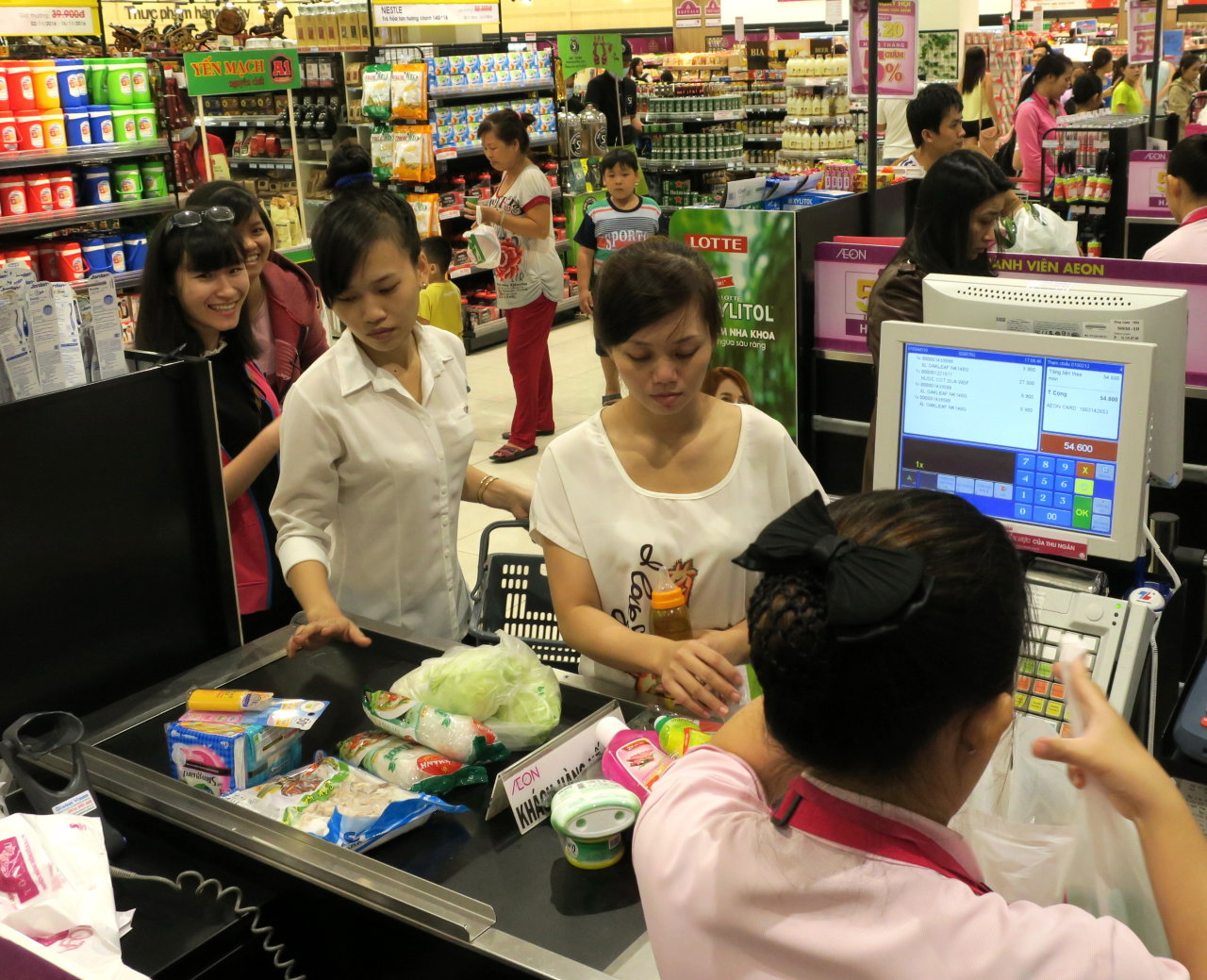 Customers check out at a supermarket in Ho Chi Minh City. Photo: Tuoi Tre Vietnam’s Ministry of Finance is looking to amend multiple tax laws in the country, including a proposal to raise the current value-added tax (VAT) rate from ten to 12 percent. The announcement came at a press conference on Tuesday, where the ministry said it would amend five laws that govern personal income tax, VAT, corporate income tax, special consumption tax and natural resources tax. The new VAT law would see a reduction in the number of services and goods exempt from the tax, as well as the list of those that currently enjoy a favorable VAT of only five percent. Current laws impose a VAT of zero percent on all exported goods, and a five-percent VAT on a number of goods essential for agriculture, medicine, education, science and technology. For other goods and services, the VAT is set at ten percent. According to the finance ministry’s announcement on Tuesday, the amended VAT law would impose a six-percent VAT on services and goods currently enjoying a VAT of five percent, and raise the across-the-board ten-percent VAT to 12 percent. A number of VAT-free goods such as fertilizers, agricultural equipments and off-shore fishing vessels would also begin to be taxed under the new law, the ministry added. The Ministry of Finance also proposed a doubling of the current special consumption tax (SCT) rates on pickup trucks. Specifically, pickup trucks with a cylinder capacity of up to 2,500cm3 will be subject to a 15-percent SCT. For pickup trucks with cylinder capacities of up to 3,000cm3, the proposed new SCT is 20 percent, and 30 percent for anything above that. Twenty-cigarette packs will be subject to a 75 percent SCT starting from 2019, and from 2020, all cigarette packs will be levied an extra VND1,000 (US$0.04) in SCT. Also beginning in 2019, the ministry is looking to impose an SCT of 10 percent on soft drinks, an item currently exempt from the tax. Revisions to corporate income tax laws will offer a favorable tax rate of 15 percent for any small to medium enterprise (SMEs) with a yearly revenue of less than VND3 billion ($132,200). For SMEs with a yearly revenue of between VND3-50 billion ($132,200-$2.2 million), the proposed tax rate is 17 percent, less than the current corporate income tax rate for SMEs of 20 percent. The Ministry of Finance also plans to revise current personal income tax calculations, allowing those with a taxable monthly income of up to VND10 million ($440) to enjoy five-percent tax rate. Currently, only the first VND5 million ($220) in taxable income falls under the five-percent category, while the next VND5 million ($220) is subject to an income tax rate of ten-percent. By Tuoi Tre News |
↧
Article 1
Hanoi chairman admits to failure on curbing unplanned real estate development Hanoi chairman Nguyen Duc Chung has admitted his responsibility for the city’s congestion problems due to the granting of too many licences to large scale real estate developments in the city centre. 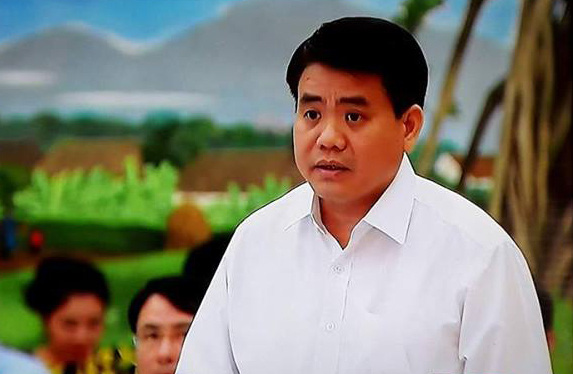 Chairman of the Hanoi People's Committee, Nguyen Duc Chung, speaks at a NA meeting on August 16. At a NA meeting on Wednesday, Chung was asked to explain about the alleged violations by investors in many urban areas and apartment buildings which are blamed for the rising congestion in the city. The city chairman admitted that there were violations, mainly in the density and height of the projects. "We take responsibility for letting these violations occur," Chung told NA deputies. "This was due to our lack of supervision. "We're co-operating with the Ministry of Construction, the Government Inspectorate and the inspection team at the Ministry of Natural Resources and Environment to better supervise the construction activities in the area." Chung revealed that the city has punished 18 officials including chairmen and deputy chairmen at some districts and communes as well as chiefs and deputy chiefs of several inspection teams relating to violations at construction projects in Hanoi since 2016. NA deputies at the meeting also gave questions to Minister of Construction, Pham Hong Ha, about the ministry's responsibilities in the rising congestion caused by the licensing of too many new urban areas and apartment buildings in Hanoi and HCM City.  Traffic congestion on Trung Kinh Street in Hanoi. Deputy Luu Binh Nhuong from Ben Tre Province quoted a statistic as saying that traffic congestion are leading to a loss of 3% annual GDP and asked the construction minister to explain the situation. Minister Pham Hong Ha said that there would be no congestion if the urban areas were built following the design plans approved by the ministry. "Our inspections have shown that most of the apartment buildings in Hanoi failed to follow their approved design plans," Ha noted. "And many urban areas are built without caring about the development of transport infrastructure. And the authorities in Hanoi and HCM City should be responsible for these violations." The minister stressed the need to tighten the approval of the plans and designs for each and every building, and strictly supervise investors to make sure that they follow the design plans. Speaking at the meeting, deputy Nguyen Thanh Hong from Nghe An Province shared that he was not happy with the answer from the construction minister as to whether the "lack of supervision" or "interest groups" have led to many streets in Hanoi being flooded with apartment buildings. Hong also pointed to the recent mess resulted from rampant construction at Linh Dam Urban Area which used to be considered a good model for the development of urban areas in the city. dtinews.vn |
↧
Article 0
NA committee discusses BOT controversyHÀ NỘI - The National Assembly (NA) Standing Committee held a working session on supervising implementation of BOT (Build-Operate-Transfer) traffic projects in the wake of heated protests over one of them in the southern province of Tiền Giang. 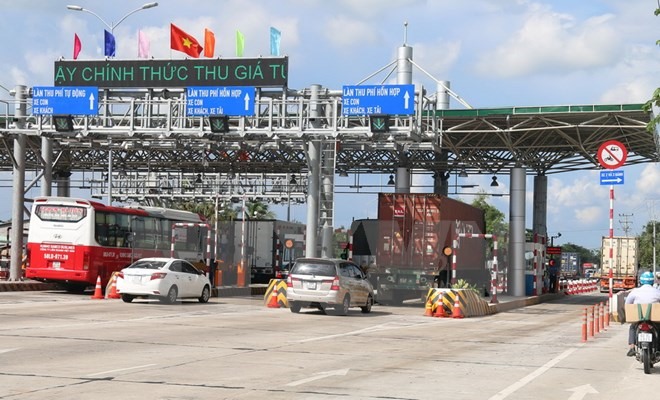 The National Assembly (NA) Standing Committee held a working session on supervising implementation of BOT (Build-Operate-Transfer) traffic projects in the wake of heated protests over one of them in the southern province of Tiền Giang. — VNA/VNS Photo Minh Trí The BOT model, which primarily cedes construction of public traffic infrastructure to the private sector, has been utilised by the Government to alleviate the burden on the State Budget, especially after official development assistance (ODA) began running thin. Chairman of the NA’s Economic Affairs Committee, Vũ Hồng Thanh, said BOT projects were a necessity and that in recent years, they had significantly improved the traffic system, especially roads and bridges, helped reduce travel time and “raised the competitiveness of the economy.” In the 2011-2016 period, the Ministry of Transport (MoT) mobilised VNĐ171 trillion (US$7.524 billion) for traffic projects, with 59 BOT projects accounting for 90.2 per cent (55 projects have been completed). These included many key connectivity projects including the Hồ Chí Minh Road (the section passing through the Central Highlands) and expansion of the trans-Việt Nam highway, National Road 1. However, a report by the thematic supervision working group has pointed out numerous issues plaguing BOT projects, especially in terms of toll collection that is used to recoup invested capital. Public feedback, especially from local residents and guild associations, has not been accounted for in determining where the toll booths would be located. In many cases, the toll has kept increasing while the quality of the roads degraded, according to the report. NA Vice Chairman Đỗ Bá Tỵ said the locations of tollbooths and the toll levels were the direct causes of people’s protests. Tỵ said the Government should “buy back” the rights of toll collection from booths located less than the minimum mandated 70km from the nearest booth. Many members of the NA Standing Committee agreed that in the coming time, the government needs to conduct a thorough review of all existing BOT tollbooths, promulgate fresh criteria for their installation and establishing appropriate price brackets. They also suggested application of electronic toll collection on all national roads starting from 2019. NA Chairwoman Nguyễn Thị Kim Ngân said the problems afflicting BOT projects in recent times arose because legal documents were not comprehensive enough, inadequate project planning led to frequent cost overruns and incompetent sub-contractors were selected without going through a proper bidding process. Ngân asked state agencies to consolidate laws on BOT investment and soon develop the Law on Public-Private Partnership, creating a consistent legal framework for both sides – the state and the private enterprises – to observe signed contracts. In the meantime, state agencies should urgently deal with regulations that are impractical and unreasonable, she said. — VNS Public outrage The Cai Lậy BOT tollbooth (at km1999+300 on the National Road section that passes through the southern province of Tiền Giang) has seen vehement protests. From last Sunday, car drivers have been heavily protesting the tollbooth, citing its “inappropriate location” and “outrageous tolls.” Drivers passing through the booth have collectively used small-currency notes to pay the toll, leading to heavy congestion as the cashiers need a lot of time to go through piles of cash to check whether the full fee has been paid. On August 13 at 6:45pm, with hundreds of cars waiting in line, the toll booth had to let all cars go through for free until 2am the next morning. The protests actually began in July, even before the toll booths were operational, when Facebook groups called on car drivers to use small-denomination currency notes to pay the toll as a means of peaceful protest. In addition, car drivers have told each other to go other routes to bypass the booth, which soon becomes a bother for nearby residents and a burden on smaller roads not designed for heavy loads of traffic. The investor of the Tiền Giang BOT project said the setting up of the tollbooth on National Road 1 to collect toll from cars running on National Road 1 and the bypass road is “totally reasonable,” and was approved by the MoT, Ministry of Finance, and Tiền Giang People’s Committee. Trần Văn Bon, Tiền Giang’s Director of the Department of Transportation, has asked the Việt Nam Road Administration to think up ways to reduce the tolls and the agency said the proposal could be feasible. - VNS |
↧
↧
Article 1
Saigon book street’s parking lots shut down by Doan Ngoc Hai campaignA company managing the popular destination is appealing the decision 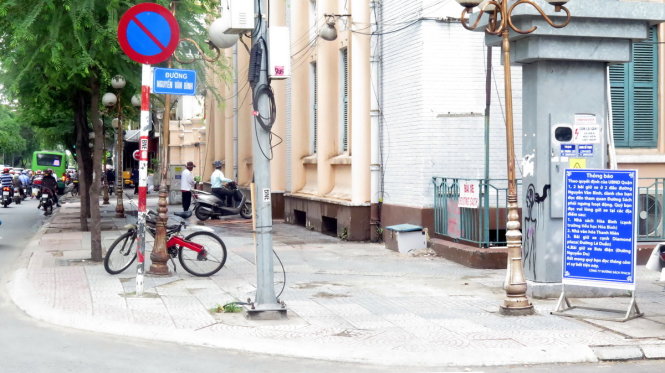 The sidewalk on Hai Ba Trung is seen following the shutdown of the parking lot. Visitors to Saigon’s Book Street are having difficulty finding a legal parking space as both of the venue’s two parking lots have been shut down by Doan Ngoc Hai, leader of Saigon’s ‘sidewalk clearing’ campaign. The book street is on Nguyen Van Binh Street, which connects Hai Ba Trung and Cong Xa Paris Streets in the centre of Ho Chi Minh City. One sidewalk parking lot was previously located at each end of Nguyen Van Binh, exclusively serving visitors to the thoroughfare, which houses multiple bookstores and book-themed cafés. Hai, deputy chairman of the District 1 administration, led his sidewalk clearance team to the book street on Sunday and insisted that both parking lots cease operating from 6:00 pm that day. This has effectively put an end to all activities on the book street as visitors could not find a place to park their bicycles or motorbikes. In reality, people could use parking lots at the nearby Diamond Plaza or Youth Culture House, or one on Nguyen Van Chiem Street, and walk to the book street.
On Monday afternoon, Le Hoang, director of the Ho Chi Minh City Book Street Co. Ltd. held a meeting with Hai and appealed his decision to remove the parking lots. Hoang said the parking lots at either end of Nguyen Van Binh were zoned in the master plan including the book street, approved by Hua Ngoc Thuan, deputy chairman of the Ho Chi Minh City administration. “Parking areas are an essential part of the book street,” he said. “The book street welcomes some 5,000 visitors on a daily basis, and double that amount at the weekends, so having the parking space close to the venue makes it more convenient for the public.” In response, Hai said the parking lot on Cong Xa Paris should be shut down, and the one on Hai Ba Trung could reopen as a free parking space.  The District 1 deputy chairman explained that the parking lot on Cong Xa Paris was serving visitors to the headquarters of the District 1 administration, fronting Le Duan Street. The parking area, managed by the District 1 Office, used to be on Nguyen Van Binh Street, but had been relocated when the thoroughfare was turned into the book street. Following the relocation, it had been requested that the free parking lot serve visitors to both the District 1 administration and the book street. However, Hai pointed out that the license of the Cong Xa Paris parking lot had expired in 2015 and that attendants had also violated regulations by collecting fees from visitors. “Moreover, the sidewalk parking lot is an eyesore on the downtown area, so we’ve decided to shut it down,” Hai said. By Tuoi Tre News |
↧
Article 0
PV Power raises share-for-sale IPO ratio to 20% HÀ NỘI - PetroVietnam Power Corporation (PV Power), the country’s second-biggest power provider, will offer 20 per cent of its total shares for sale at an initial public offering (IPO) in December. The member company of the Việt Nam Oil and Gas Group (PVN) will also sell 29 per cent of its capital to strategic investors. 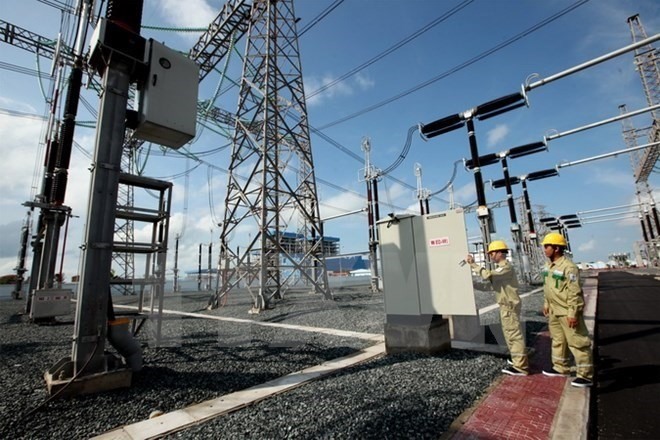 PetroVietnam Power Corporation (PV Power), the country’s second-biggest power provider, will offer 20 per cent of its total shares for sale at an initial public offering (IPO) in December.- VNA/VNS Photo Under a previous IPO plan published in April, the company said it would sell 4 per cent of shares at the IPO and 45 per cent to strategic investors to receive US$600-700 million. The previous plan also stated that the IPO would be conducted in August 2017 and the private offering for strategic investors would be completed this year. The company also expected to raise its ratio of shares for sale up to 60 per cent if approved by the Government. PV Power has constantly re-scheduled its IPO plan. In June 2016, the company planned to hold its IPO in October the same year and unload a quarter of the State’s ownership. According to HCM City Securities Corporation, the company’s decision to raise the number of shares for IPO sale could stem from the fact that State-owned businesses have failed to offload all the shares they offered to strategic investors. Individual investors were far more interested in IPO shares and the number of their placed orders exceeded the number of shares offered by the companies. According to analysts, there are several reasons that have made State-owned company IPOs unattractive to strategic investors. First, those companies conducted their IPOs when market demand was not high, leading to low purchases of their shares. Second, institutional investors were hesitant to purchase shares in those companies because the Government still held the controlling stake in the businesses after it was equitised. In addition, the auction prices offered at the IPOs did not match investor expectations while the management boards of some firms were afraid of becoming transparent and accountable. In the latest IPO plan, posted on the company’s website last week, PV Power had VNĐ21.7 trillion in charter capital and was valued at VNĐ60.6 trillion on December 31, 2015. PV Power is currently the second-biggest power provider in Việt Nam, supplying 12 per cent of the country’s total electricity production with seven power plants producing total output of 4.2 gigawatts. The company last year produced 21,156 billion kWh, earning VNĐ26.5 trillion in revenue and VNĐ1.6 trillion in post-tax profit. It targets production output of 21 billion kWh in 2017, VNĐ30.8 trillion in revenue and VNĐ1.56 trillion in post-tax profit. - VNS |
↧
Article 2
BUSINESS IN BRIEF 17/8 SVEAM works to boost export of Vietnamese agricultural machinery The Southern Vietnam Engine and Agricultural Machinery Co. Ltd (SVEAM) said it will invest efforts in improving product quality so as to export more Vietnam-branded agricultural machinery. SVEAM said it has spent 120 billion VND (5.28 million USD) in phase I and 40 billion VND (1.76 million USD) in phase II on promoting the quality of diesel-powered machines and small-sized tractors. The company currently owns more than 60 precision machining centres, 400 specialised equipment, and modern measurement and testing devices, to ensure high and stable quality of its products. Vikyno and Vinappro are SVEAM’s two brands that have the rate of locally-made components of up to 100 percent, the firm noted, adding that the brands have become popular in foreign markets, especially in Southeast Asia and South Asia. Export revenues of these brands are about 10-12 million USD each year, accounting for 40 percent of SVEAM’s total overseas shipments. Bac Ninh attracts almost 3 billion USD in investment  The northern province of Bac Ninh has drawn nearly 3 billion USD in investment capital since the start of the year, reported the provincial Management Board of Industrial Parks. Of the sum, the investment flow from foreign direct investment (FDI) projects exceeded 2.8 billion USD, while the rest came from domestic projects. In July alone, the province licensed 10 new projects with a total registered capital of 29.44 million USD, of which 21.28 million USD from FDI projects. Bac Ninh province has given priority to the hi-tech, supporting and manufacturing industries. Besides, local authorities have held frequent meetings with businesses to address their difficulties, fostered production and raised the efficiency of local industrial parks and clusters. In addition, the province has reviewed and further improved its investment climate while simplifying administrative procedures, especially in the fields related to land, construction, labour and customs. The Bac Ninh Management Board of Industrial Park has to date granted 1,138 investment certificates to 401 domestic and 737 foreign firms, with a combined registered capital of over 16.1 billion USD. Railway sector asked to improve competitiveness Prime Minister Nguyen Xuan Phuc’s working group has called for the railway sector to raise its competitiveness in comparison with other modes of transport. Working with leaders of the Vietnam Railway Corporation in Hanoi on inspections among other matters, Mai Tien Dung, Minister - Chairman of the Government Office, said such inspections were carried out to check the implementation of measures to ensure hitting this year’s GDP growth target. The working day with the railway sector aimed to examine the implementation of measures to promote business, to increase transport revenue and passenger and cargo transport. It also hoped to detect difficulties and obstacles in order to find measures to tackle these difficulties. In the first six months of the year, the railway corporation achieved revenue of 3.5 trillion VND (155 million USD), an increase of 3.8 percent compared to last year’s same period, and only 45 percent of the year’s goal. The working group, on behalf of the Prime Minister, said the corporation needed to explain several matters. The first issue is a 12 percent drop of the sector’s revenue in 2016, which was 6.5 trillion VND (289 million USD), compared to 2015. “When compared to other transport types, railway transport is less attractive – in terms of safety and quality. The facility is outdated. For goods transport, storage and loading ports, connections with air and sea transport are not convenient,” said Dung, who is also head of the working group. “The Prime Minister said that leaders of the corporation should think about how to improve all of these elements to raise competitiveness,” Dung said. Another issue was safety and skills of the sector’s staff. The working group cited recent incidents including accidents at Yen Vien station and an incident when two trains travelled on the same track at Suoi Van station in Binh Thuan province. Investment in the railway sector was also important. “It’s good that the sector has already called on investment in storage, loading means and connecting railways with industrial zones, airports and sea ports,” Dung said. In response to Dung’s comments, Vu Ta Tung, Director of the Vietnam Railway Corporation, admitted that the railway sector faces fierce competition on price with air, road and waterway transport. The price depended much on the railway sector’s infrastructure, he said. "Many officials of the railway sector still have backward thinking," Tung said. However, to change the backward thinking and develop the sector, it would be a long road, not a short one, he said. The Prime Minister asked the sector to pay attention to managing and improving railway crossings. The final matter was the issue of equitisation. The working group said the corporation had proceeded with this in good time but capital withdrawal has not met requirements. Deputy PM calls on AIA to expand investment in Vietnam Deputy Prime Minister Vuong Dinh Hue has stressed opportunities for AIA Group Limited to invest in Vietnam’s potential life insurance market. Hue told Ng Keng Hooi, Chief Executive and President of AIA Group Limited, in Hanoi on August 15 that the Vietnamese Government will work harder to raise public awareness of life insurance and issue more relevant policies to make it easier for businesses, including AIA, to participate in the local insurance market. The Deputy PM also called on AIA and other life insurance companies to diversify their products in order to meet demands of Vietnamese customers. He suggested the group join Vietnam’s derivatives market, saying AIA will have more changes to expand their financial investment in the country as the Vietnamese Government will employ an array of measures to restructure the financial and banking sectors and equitise State-owned enterprises. Appreciating AIA’s engagement in Vietnam’swith tenures ranging from 20-30 years, Hue noted his hope that the group will pour more capital resources into the market. For his part, Ng Keng Hooi applauded the Vietnamese Government’s efforts to improve local investment and business climate over the past years and described Vietnam as a promising market for financial investors. AIA will continue to invest in Vietnam’s long-term G-bonds and pay attention to life insurance in the country, he said. AIA is the largest independent publicly listed pan-Asian life insurance group – with a presence in 18 markets across the Asia-Pacific region. The group’s vision is to be the world’s pre-eminent life insurance provider and its purpose is to play a leadership role in driving economic and social development across the region. Seven-month FDI nears 794 million USD in Dong Nai Foreign direct investment (FDI) inflow to the southern province of Dong Nai in the first seven months reached nearly 974 million USD, representing 79.4 percent of the yearly plan, according the provincial Industrial Zone Authorities. Of the figure, 284 million USD was registered to 45 new projects and the remaining 509.6 million USD went to 66 existing projects as registered additional capital. FDI projects mostly went to Bau Xeo Industrial Zone (IZ) with two projects worth of 115 million USD, said the authorities, adding at Nhon Trach IZ attracted 12 projects valued at 42.7 million USD, among others. To date, 32 industrial zones in the locality has welcomed 1,548 projects worth 21.6 billion USD from 42 countries and territories. In the reviewed time, Dong Nai province also drew over 2.8 trillion VND (126 million USD) of domestic investment. The sum came from 10 newly-licensed projects worth of 2.57 trillion VND (113.3 million USD) and three existing projects with additional capital valued at 290 billion VND (12.7 million USD). To date, total investment of domestic projects in Dong Nai has reached 50.5 trillion VND. The projects licensed in the last seven months are in high technology, supporting industry and green technology, said the Authorities, adding that they are in line with the province’s policy to prioritise hi-tech projects. The projects in the province’s industrial zones have created jobs for 539,754 employees, including 6,424 foreigners. Top Thai brands exhibition to open in Hanoi An exhibition featuring “Top Thai Brands” is scheduled to take place in Hanoi from August 17-20, according to the Vietnam National Trade Fair & Advertising Company (Vinexad). Co-hosted by the Thai Ministry of Commerce’s Department of International Trade Promotion, the Trade Office of the embassy of Thailand in Hanoi and Vinexad, the event will feature trade among exhibitors from August 17-18 and free public entry from August 19-20. During the first two days, 113 Thai companies and business associations will directly meet Vietnamese importers to seek partners and business opportunities. Later, 192 stalls by Thai merchants and Vietnamese agents of Thai products will showcase food and beverages, household appliances, apparel and accessories, household electrical appliances, health care products, and several other services. Thai food cooking demonstration and dance performances by Thai experts and troupes are also planned for. The event is expected to raise mutual understanding and boost trade between the two countries. Tra Vinh province launches e-commerce website The southern province of Tra Vinh on Tuesday launched an e-commerce website at http://travinhtrade.vn. Nguyen Trung Hoang, vice chairman of the provincial People’s Committee, said that the website aimed at improving the efficiency of trade promotion activities, and providing, as well as updating information, about Tra Vinh’s specialties. The local enterprises would be able to advertise products and seek partners, while consumers would have a trustworthy place to choose high-quality goods, Hoang said. So far, 15 firms have registered to do business on the website to promote 50 specialities. Enterprises can apply to be the website’s member for free. Director of the provincial Department of Industry and Trade Tran Quoc Tuan said that local firms had not been interested in e-commerce, which is seen by the fact that only 250 among 1,900 enterprises in the province have their own websites. The department would step-by-step complete, upgrade and integrate more supporting functions to facilitate purchasing processes in a safe, convenient and time-saving manner, Tuan added. Indonesia told to invest in Viet Nam to boost trade Trade Minister Enggartiasto "Enggar" Lukita has urged Indonesian businesspeople to cooperate with Viet Nam to boost trade and investment, instead of competing with the country. The cooperation includes investing in Viet Nam to sell more products to countries that Vietnam has free trade agreements (FTA) with, said the ministry at the sixth Indonesia-Viet Nam Joint Commission on Economics, Scientific and Technological Cooperation (JC-ESTC) in Ha Noi over the weekend. “We need to invest in Viet Nam not only because it has 93.3 million people [third biggest country in terms of population in ASEAN], but also because of the other countries that have bilateral FTAs with Viet Nam,” he said in a press release. Some Indonesian firms run businesses in Viet Nam’s property, cement and coal sectors while Vietnamese firms are interested in Indonesia’s coal industry. Indonesia has seen a trade deficit with Viet Nam from 2012 to 2016 with the deepest deficit of US$966.5 million in 2014 before easing to $182.6 million, last year. Total trade reached $6.2 billion last year, with Indonesia exporting $3 billion, dominated by copper, pepper, ground fruits, coconuts, coal, palm oil and its products. In the first five months this year, nevertheless, Indonesia has managed to book a trade surplus of $5.1 million. Co Chien IZ to be built for $53m The People’s Committee of the southern province of Tra Vinh has granted a licence to the Dong Do Southern Construction and Investment Joint Stock Company to build the Co Chien Industrial Zone. Located in Cang Long District’s Dai Phuoc Commune, the zone covers an area of 200ha and will be constructed at the cost of VND1.2 trillion (US$53 million). It is expected to create jobs for locals, attract more foreign investment and contribute to the province’s socio-economic development when it comes into operation by 2019. Naticorp signs condotel project agreement with Thai firm Nam Tien Lao Cai Corporation (Naticorp) and Thailand’s InVision Hospitality signed a management agreement for the Scenia Bay condotel project in Nha Trang City on Tuesday. The Thai company will be responsible for all the operations of the project when it becomes operational in 2020. Located on Pham Van Dong Street in Nha Trang Beach City, the five-star condotel is built on a total area of 7,666sq.m. It has 40 floors with 700 condos for sale and some 270 hotel rooms. The project is on prime location with the main side adjacent to Nha Trang beach, besides having easy access to the city’s beautiful landscapes, such as Hon Mun, Hon Tam, Ninh Van Bay, Po Nagar Cham Tower, Hon Chong, Dam Market and Turtle Island. “Scenia Bay is the first project marking the company’s foray into the hospitality sector, after a chain of residential projects in Lao Cai,” Cao Thi Thu Hien, CEO of Nam Tien Lao Cai Corp, said. Hien expects Scenia Bay to become an attractive resort property in the Nha Trang market. Headquartered in northern Lao Cai City, and with over 20 years of operation, Nam Tien Lao Cai Corp has expanded its businesses from infrastructure construction and hydro-power plants to chemicals and real estate sectors with an annual turnover of VND1.2 trillion (US$53 million). With a portfolio of 13 properties under management in Thailand, Malaysia and Viet Nam, InVision Hospitality provides strategy and management for new or existing hospitality projects throughout Southeast Asia. It is managing five properties in Viet Nam, including Mai House Saigon, Mai House Hoi An Beach, GLOW Ma Belle Da Nang, GLOW Premier Nha Trang and Montgomerie Links Da Nang. Minh Phú Seafood sees profit up 34 times Minh Phú Seafood Corporation (MPC) recorded a post-tax profit of VNĐ101.4 billion (US$4.54 million) in the second quarter of this year, 34 times higher than the same period last year and the highest level in the last eight quarters, online newspaper Infonet.vn reported. During the reviewed period, MPC’s net revenue reached VNĐ3.6 trillion, up 37.3 per cent year-on-year. The company’s cost of goods sold (COGS) on net revenue dropped sharply from nearly 93 per cent to 89 per cent, bringing gross profit to VNĐ398.2 billion, double the same period last year. Thanks to a 26.4 per cent decrease in loan interest, financial expenses were lower than the same period last year. Corporate governance cost also declined sharply by 41 per cent to over VNĐ40 billion. Sales costs increased by 29 per cent to nearly VNĐ182 billion, resulting in a pre-tax profit of VNĐ134.4 billion. Earning per share (EPS) reached VNĐ1,480, much higher than last year’s figure of VNĐ469. In the first six months of 2017, MPC’s net revenue reached VNĐ6.34 billion, up 34.5 per cent year-on-year while its post-tax profit totalled VNĐ144 billion, seven times higher than the same period last year. EPS reached VNĐ2,104. In 2017, MPC targets consolidated net profit of VNĐ841.28 billion. With the results achieved in the second quarter, the company has just completed about 17 per cent of the target. At the end of Q2, MPC’s total assets reached VNĐ8.3 trillion, of which inventories accounted for nearly VNĐ4.4 trillion. The company’s liabilities at the end of Q2 amounted to VNĐ5.9 trillion, accounting for 71 per cent of total capital. Of the estimated amount, short-term loans touched VNĐ3.3 trillion, up nearly two times compared to the beginning of this year, while long-term loans were over VNĐ2 trillion, down 41.3 per cent from the beginning of this year. MPC recently approved the plan of its subsidiary Minh Phú Import and Export of Food Co Ltd to reduce its charter capital from a registered VNĐ40.8 billion down to the actual capital of VNĐ2 billion. In addition, the Board of Directors approved additional investment into two shrimp farming areas for MPC’s shrimp farming development strategy. Accordingly, it will add some VNĐ70 billion to increase charter capital of Minh Phú - KG Seafood Co Ltd to VNĐ220 billion, investing more VNĐ30 billion in Minh Phú–Lộc An Aquaculture Co to raise its chartered capital to VNĐ180 billion. US beef exports to Vietnam double in first half of 2017 US beef exports to ASEAN capped off a very strong first half of the year, according to statistics released by the US Department of Agriculture and compiled by the US Meat Export Federation. For the six months January through June 2017, US global beef exports were up 12% in volume to 606,876 metric tons and 15% in value to US$3.35 billion compared to the first half of 2016. Led by a doubling of exports to Vietnam and Indonesia and strong demand in the Philippines, US beef exports to the ASEAN region increased 85% in volume to 20,532 metric tons and 61% in value to US$99 million. Cashew nut exports rise high in value Cashew nut exports hit 188,034 tons with a value of US$1.85 billion in the first seven months of this year, down 1% in volume but up 25.2% in value against the same period last year, according to the General Department of Vietnam Customs. Vietnam businesses shipped 36,804 tons of cashew nut to get US$380.4 million in July, up 6.6% in volume and 7.4% in value compared to June. The average export price in seven months rose 27% to US$9,842 per ton. The US was the largest importer of Vietnam cashew nut with US$679.67 million, accounting for 36.7% of Vietnam’s total export value (up 37.7%), followed by the Netherlands with US$288.02 million, making up 15.6% (up 43,9%). Cashew exports to almost all markets saw a growth in seven months, such as Belgium (up 95.3% to US$11.66 million), Russia (up 65.8% to US$30.18 million) and India (up 39.8% to US$22.19 million). However, exports to Pakistan and Greece suffered a deep decline of 54% and 53% respectively. Although the export price hit a record high and tends to rise in the coming time, the cashew nut industry of Vietnam still depends on imported raw materials. In 7 months, cashew nut imports jumped 56.9% in volume to 891,977 tons and 101.7% in value to US$1.72 billion. On the domestic market, the price of raw cashew nut also hit a record high of VND50,000 per kilo. Southern lottery companies bow down to Vietlott Giving in to the dominance of Vietnam Lottery Company (Vietlott), traditional lottery companies in Ha Nam and Thua Thien-Hue provinces decided to co-operate with Vietlott instead of seeking a confrontation. Nguyen Thanh Dam, deputy general director of Vietlott, told Vnexpress that they have signed contracts with lottery companies in Ha Nam and Thua Thien-Hue provinces. Accordingly, along with traditional lottery business, these companies will become Vietlott’s agents to take the bonus. According to rumours, Capital Lottery Company also intends to co-operate with Vietlott to improve its business results. Capital Lottery Company lost its shine since Vietlott’s Mega 6/45 has appeared. The company also launched a computerised lottery to compete with Vietlott, but failed because Vietlott has been offering much higher jackpot prizes. Besides, the company also saw a decrease in profit. Notably, in 2016, Capital Lottery earned VND728 billion ($32.04 million) in revenue, however its profit was only over VND3 billion ($132,045), equalling a quarter of 2014. In 2017, the company expected to earn VND3.6 billion ($158,454) in profit only. In its report related to its development strategy by 2020, Capital Lottery set the target to prevent decrease in revenue and profit. In the race to gain market share, traditional lottery companies in the South were forced to raise their maximum prize to VND2 billion ($88,260) since January 1 from the previous VND1.5 billion ($66,195) in an effort to compete with Vietlott. In early December, Vietlott officially expanded to Hanoi with 150 agents, hoping to replicate its success of the past few months in the south. In January 2016, Vietlott signed an exclusive 18-year contract with Malaysian conglomerate Berjaya to launch computerised lottery games. The Mega 6/45 is the company's first foray into the market. Players select six numbers from 1 to 45 and win a jackpot that starts at VND12 billion ($538,000) by matching all six numbers from the draw. Each ticket costs VND10,000 ($0.40). The prize will keep growing until there is a winner. The odds of winning have been estimated at around one to 8.14 million, lower than the odds of being struck by lightning. In 2016, Vietlott reported a revenue of VND1.6 trillion ($70.6 million). This is the highest annual revenue since the company’s establishment in 2011. Marketing forum proffers online action for SMEs With the aim of strengthening awareness of online marketing channels and enhancing the global market share of Vietnamese enterprises, Marketing Forum 2017 (VOMF 2017), organised by the Vietnam E-commerce Association (VECOM), are taking place in both Hanoi and Ho Chi Minh City, the country’s two e-commerce centres. The event was held in Ho Chi Minh today and will take place in Hanoi on August 17, with the main topic of “Outstanding marketing trends.” The forum will focus on affiliate marketing trends and search engine-, programmatic-, multichannel-, mobile-, social-, and content marketing. The forum is organised to support domestic enterprises by promoting their capacities and products via effective online marketing channels. The event has drawn the participation of over 1,000 enterprises and organisations nationwide. Many recognised spokespersons from leading organisations and businesses in the industry have participated in the forum to share their expertise and guidelines in this field. Vietnam e-Business Index 2017 reported by VECOM indicated that social networks surpassed search engines to become the most popular online advertising medium in 2016, as they were used by 47 per cent of businesses, while search engines and emails were used by 41 and 36 per cent, respectively. In general, social networks were not only the most used channel but were also considered the most effective one. In addition, 46 per cent of businesses said social network advertising is highly effective, while 44 per cent are confident in search engines. Nguyen Thanh Hung, chairman of VECOM, said at the event in Ho Chi Minh City, “The most effective way to do online business is to have a website and social media presence that work together to spread your message and foster relationships with the broadest range of target customers. Once your website and social media pages run together, you can leverage benefits across both. Your website can be the epicentre of all your brand communication, while your social media page can be used to engage and redirect customers back to your website.” According to a business survey released by market research company RedShift Research and GoDaddy, the world’s largest domain name registrar, 59 per cent of businesses that own a website said their business grew since appearing online. Another survey on online consumers also showed that 67 per cent of consumers shopped online on websites or mobile applications after checking reviews and comments from social media. Unlike a social media page, a website reflects a brand in its design, user interface, and messaging. Thus, small and medium-sized enterprises (SMEs) can use a combination of both to connect with their target audience in order to stand out amidst the increasingly competitive environment. Hoc Nguyen, director of P.A Vietnam, the largest domain provider in Vietnam, revealed, “Choosing the right domain name is the first step towards building a successful and credible online presence. There is a level of credibility awarded to the businesses using trusted domain extensions. For this reason, we advise businesses to choose .com for their websites because it is the trusted global standard for doing business online.” Founded on June 25, 2007, VECOM is a non-governmental and non-profit organisation. VECOM’s members include corporations, organisations, and individuals who directly work in the e-commerce industry. VECOM operates all over Vietnam on a voluntary basis, for the purpose of gathering, uniting, cooperating, supporting, and protecting all members to develop e-commerce in Vietnam. Tech Expo 2017 matches IT talent and recruiters Tech Expo 2017, a technology recruitment event held by VietnamWorks, a division of Navigos Group Vietnam, was held last week in Hanoi, attracting nearly 1,000 information technology (IT) specialists and 14 leading IT recruiters in Vietnam. The organizers have designed a special mobile application, allowing candidates to instantly apply for the best jobs displayed on the Hot Job Board and at the same time discover the company’s culture through integrated technological channels. At recruiter booths, IT candidates were interviewed directly by recruiters then discussed the job description and the development orientation of the company. They also had the chance to experience the company’s corporate culture. To attract talent to their booths, companies organized games with interesting gifts or showed off their latest technologies. Moreover, IT candidates received helpful advice from experienced recruitment experts at the Navigos Group on how to impress employers with their CVs. One of the recruitment experts said: “When we met candidates at the Tech Expo this year, we saw that many have not highlighted their career objectives. They don’t know how to express their strengths regarding skills and achievements.” Concerns about IT human resources in Industry 4.0 For IT staff, the fourth industrial revolution (Industry 4.0) offers a host of career opportunities in new fields. Demand for positions relating to Artificial Intelligence, Data Science, and Embedded Programming will constantly increase. Regarding the quality of Vietnamese IT candidates, speakers at Tech Expo agreed that Vietnam has an advantage in large numbers of IT staff, most of whom are young, hardworking, and eager to explore new things. In particular, Vietnamese IT staff are good at mathematical thinking, which is advantageous for Data Science. However, to quickly adapt to Industry 4.0, Vietnamese IT candidates first need to improve their English skills to remain up to date with the latest technology from around the world. In addition, as the IT job market is constantly changing and training programs struggle to stay relevant, IT candidates are required to be proactive in developing their own capacity. Mr. Le Hoang Dung, CEO of 5S Vietnam, one of the speakers, said: “In my opinion, Industry 4.0 and the Internet of Things (IoT) are very good opportunities for startup ideas. You should take advantage of this trend to bring success for yourself.” Another speaker, Mr. Le Ngoc Tuan, IoT Product Manager, Technology Division, at FPT Corporation, told IT graduates: “To succeed, you need to learn new knowledge such as IoT and Data Science and should practice with Open Source System as well as participate in technology events to gain new knowledge.” Mr. Gaku Echizenya, Chairman and CEO of the Navigos Group, said: “At the tech expo, participants had the chance to explore a company’s culture before applying for a position. Moreover, when attending tech seminars, they learn new knowledge and skills, which will be helpful in future development. This demonstrates Navigos Group’s long-term vision of ‘success after joining’, in which we help candidates become successful and engaged and committed to their new company.” Hi-tech agriculture enterprises face difficulties in borrowing Although the Government approved a credit package worth VND100 trillion (US$4.4 billion) early this year to develop high-tech agriculture, farmers and agricultural enterprises without consumption markets for their products have found it difficult to take out loans from banks, said the State Bank of Vietnam (SBV). Nguyen Thi Hong, deputy governor of the central bank, said at a regular meeting of the Government early this month that banks would face risks when offering loans to individuals and enterprises involved in high-tech agriculture if outlets for farm produce are not secured. The reason is that households producing and trading in hi-tech agricultural products have little information about local and export markets. Hi-tech agriculture development loans from banks have not been supported by the State budget. Thus, only individuals and enterprises with feasible business projects and stable consumption markets can borrow money. To help enterprises sell their products, the Ministries of Industry-Trade and Agriculture-Rural Development have to assess and forecast the market demand for hi-tech farm produce, said the SBV. Besides, the two ministries should implement trade promotion programs and help enterprises penetrate potential overseas markets. The State Bank pledged to direct commercial banks to offer loans appropriately and provide additional capital to meet the demand of enterprises. The Ministry of Agriculture and Rural Development on August 14 organized a hi-tech agriculture development conference in Lam Dong Province, one of the most effective hi-tech agriculture provinces in Vietnam. Each year, the province fetches VND500 million from a hectare of vegetables and VND1.2 billion from a hectare of flowers. Long Thanh airport project gets VND5 trillion for site clearance The Government has agreed to allocate in advance VND5 trillion (about US$220 million) as approved by the National Assembly for site clearance, compensation and resettlement in the Long Thanh International Airport project in the southern province of Dong Nai. According to Document No. 1165 signed last Thursday by Deputy Prime Minister Trinh Dinh Dung, the central Government assigned Dong Nai authorities to work with the Ministry of Transport and related agencies to conduct feasibility studies for resettlement and site clearance compensation of the Long Thanh airport project. The Ministry of Planning and Investment was asked to coordinate with related ministries and agencies to appraise these feasibility studies and submit the results to the Prime Minister to report to the 14th National Assembly at its fourth meeting. The Government has agreed to allocate VND5 trillion from the medium-term public investment plan for the 2016-2020 period approved earlier by the National Assembly for these components, and assigned the People’s Committee of Dong Nai Province to manage and use this amount of capital in accordance with current regulations. The Ministry of Natural Resources and Environment was assigned to appraise policies and a legal framework for the project’s resettlement and site clearance compensation and report to the Prime Minister before August 15, 2017. According to Dong Nai government, 5,000 hectares of land needs to be cleared to make room for the project, with 4,730 households and 26 organizations to be relocated. About 70% of 15,000 affected people are farmers and the rest are rubber workers and those working for other sectors. Total resettlement and site clearance cost for the project is estimated at VND23 trillion (over US$1 billion). The NA has allowed the project investor to use VND5 trillion from G-bond sales in the 2017-2020 period for these components, while it is still unknown where to secure the remaining VND18 trillion. In a report sent to the NA, the Ministry of Planning and Investment said it will work with the Ministry of Finance and the Ministry of Transport to consider using backup funds for medium-term public investment to finance the project. However, according to the ministry, it would be hard to mobilize VND18 trillion. In related news, the Prime Minister has agreed to hire foreign consultants to conduct surveys and evaluate possibilities of expanding the Tan Son Nhat International Airport in HCMC towards both north and south. As the project’s investor, the Ministry of Transport will select consultants and submit expansion options to the Prime Minister in December 2017. Sales of nutritional products for elderly citizens may fare well The number of people over 50 years old is forecast to account for around 22% of the nation’s population by 2020. This age group is regarded as a potential niche market for the local nutrition sector. Market research firm Kantar Worldpanel Vietnam says in its report on the potential for the nutritional market released on August 14 that data of the General Statistics Office of Vietnam and the United States Census Bureau shows the number of residents over 50 years old in Vietnam is predicted to reach 22 million by 2020, a rise of four million over 2015. The situation opens ample opportunity for local companies to produce food and beverages that can address the nutritional needs of customers in this age group. Kantar Worldpanel says nutritious drinks for people aged 50 or higher account for about 18% of all non-alcoholic beverages for this age group. The figure is significantly lower than that for the age groups of 4-6 at 80.6%, 7-13 at 59.7% and 14-19 at 30.1%. According to the report, manufacturers of products for children aged under 13 are faced with tough competition among brands and new product models, as the number of children in this age group is forecast to see a slight decrease by 0.4 million to 22.3 million by 2020 compared to 2015. More importantly, there has been a gradual improvement in the intake of nutritious food among children. Households, especially those from rural areas, have shown more concerns over the health of their kids, thereby spending more money on dairy products and nutritional beverages for them. Therefore, Kantar Worldpanel notes in its report that producers should pay special attention to the development of products which suit individual needs. In addition, they should notice a series of other issues. Firstly, consumers suspect information on news, advertising, promotion and word-of-mouth channels. Hence, this inclines them to seek product information by themselves before purchasing. Besides, consumers have strong reactions over food scandals in both urban and rural areas, as they update news more frequently. Second, consumers are willing to pay more money on natural products that are good for their health. Third, the demand for nutritional balance is to control height and weight. That kids in rural areas are provided with more dairy products will help increase their sales of pre-made powdered milk, barley water, and soft cakes. Meanwhile, adults in urban areas give the priority over products with little or no sugar and fat like sugar-free yogurt and sugar-free milk. Finally, consumers look for products which provide more nutrients such as milk with calcium supplement, and ginseng. Kantar Worldpanel says the nutritional market which has grown by double-digit rates in the past five years is forecast to reach US$6 billion by 2020 from US$4.1 billion in 2016. Startup Exchange 2017 to be launched next week The Startup Exchange 2017 will be held at the Riverside Palace in HCMC’s District 4 on August 26 with the participation of nearly 120 local and foreign startups. As part of the Startup Day, an annual event held by the Business Startup Support Center (BSSC), there will be a playground for startups to introduce their products to customers, present their ideas to convince investors to pour money in their businesses and sell their stories to the media. While the previous Startup Exchanges featured mostly contestants of the Startup Wheel contests, this year’s event has lured a variety of entrepreneurs. Nguyen Thi Dieu Hang, deputy director of BSSC, said beside 60 semi-finalists of the Startup Wheel 2017, the event will be attended by nearly 60 other startups nationwide and three foreign startups, with one from the Philippines and two from South Korea. Startup Exchange 2017 will be held simultaneously with the semi-final and final rounds of the Startup Wheel 2017 contest. In the morning, 60 semi-finalists will present their products and ideas to the jury, and top 10 contestants will go to the final in the afternoon. The first, second and third prize winners will receive VND200 million (US$8,800), VND70 million and VND40 million respectively. Online marketing forum expected to feature new solutions Vietnam Online Marketing Forum (VOMF) 2017 scheduled to commence today will provide effective marketing solutions for enterprises doing online business given the forum’s tight agenda on such a topic. The forum held by the Vietnam E-Commerce Association (VECOM) in HCMC today and in Hanoi City on August 17 is aimed at introducing new online marketing trends in Vietnam as well as in the world. The event will be attended by experts in online marketing, e-commerce and market research. Experts will present their experiences in online marketing and introduce marketing support services. The forum will also offer opportunities for enterprises to introduce their products through promotion programs and seek cooperation with potential partners. VECOM Chairman Nguyen Thanh Hung said VOMF 2017 will help e-commerce enterprises to adopt appropriate marketing solutions and enhance the effectiveness of marketing activities. Market research and marketing experts will also speak about market data and discuss trends of customers’ online demand, automatic marketing solutions and solutions for optimization of online orders. The event will feature five forums in which experts will discuss directly with online traders about customers’ demand, marketing solutions, online brand building, advertising activities and connection of online partners for market expansion. VOMF 2017 is expected to attract 2,000 e-commerce enterprises and more than 50 online marketing service suppliers. A survey of VECOM shows that 67% of individual consumers use mobile apps for online shopping after reading comments on social media. The second factor affecting online consumers’ purchases is the introduction of friends and relatives (47%) while advertisements on media channels rank third with 33% having impacts on consumers’ decisions. VOMF 2017 will be held from 8:00 a.m. to 17:00 p.m. at Capella Parkview on Dang Van Sam Street, Phu Nhuan District, HCMC. Visitors can access the websites http://hcm.vomf.vn/ (HCMC) and http://vomf.vn (Hanoi) for more information. HSBC: Equitization not a solution for fiscal deficit The equitization of State-owned enterprises (SOEs) alone is not a short-term solution to reduce the Government’s fiscal deficit but could be a reliable source of funding through continued reforms, said HSBC Bank. According to a report released on August 14, HSBC said the Government has shown a renewed focus on equitizing SOEs following the leadership transition in April 2016. This heightened urgency is partly driven by the country’s rising public debt level, which is now close to reaching the State-mandated limit of 65% of gross domestic product (GDP). Vietnam’s policymakers, in recent statements, have framed the sale of SOEs as a means to both increase fiscal revenues and reduce government expenditures. This, in itself, is a positive direction and deserves full recognition. However, this is not an easy task given the remaining challenges for SOE reforms and accelerating government expenditures, it commented. The challenges to SOE reform include increasing share allocations to private investors and incentivizing regional municipalities and SOEs to speed up participation in the equitization process. HSBC believed that SOE equitization alone is not a short-term solution to reducing the Government’s fiscal deficit but could be a reliable source of funding through continued reforms. Meeting the Government’s 3.5% deficit target for 2017, however, would have to come on the back of reduced government expenditures. “The fiscal deficit has been growing consistently in recent years. According to our estimates and assuming the country meets its 6.7% GDP growth target for 2017 (we forecast 6%), Vietnam’s deficit would have to be below its 2012 levels in nominal terms to achieve the Government’s target,” it said in the report. Besides, HSBC believed additional reform measures remain crucial to fully realizing the Government’s equitization agenda. For instance, SOE reforms have primarily focused on targeting the sale of minority stakes, while the Government retains majority control. This has left strategic investors with limited ability to reshape Vietnamese companies, improve corporate governance, and make the companies globally competitive, thereby deterring private investors from fully participating in the process. According to Deputy Prime Minister Vuong Dinh Hue, around 97% of SOEs have already gone public to date, but only 8% of the equitized stocks have been sold to private investors. Moreover, SOEs and municipalities themselves have been slow to participate in the equitization process. Slow equitzation has also meant that Vietnam’s earnings from SOE divestments have been lower than expected. Media reports suggest that equitization and divestments netted nearly US$3.4 billion for the state budget from 2011 to 2015, which is low for a five-year period, especially when compared to total SOE assets of roughly US$130 billion. Things seem to be turning around slightly, however. As of the second quarter of 2017, Vietnam earned VND11.6 trillion (US$504 million) from divestments, which is an increase of 314% from the previous year. “Lastly, meeting the 3.5% fiscal deficit target would have to be part and parcel with drastically reduced government expenditures. The budget deficit has grown consistently in recent years and, from our estimates, would have to decline to around VND168 trillion to meet the target,” HSBC added. Questions abound over BOT projects’ cash flows A report delivered on August 14 by a supervision team of the National Assembly shows the capital costs borne by owners of many build-operate-transfer (BOT) and build-transfer (BT) projects are much higher than their earnings, but droves of investors have still rushed for such projects. Questions hence abound over the transparency in the operations of these projects. According to the report delivered at the NA Standing Committee in Hanoi on August 14, bank loans taken out by these investors carry interest sums exceeding the reported revenues from these projects, but investors are still happy. Loans used to finance build-operate-transfer (BOT) road projects actually carry higher interest rates than the profits their investors earn a year, the supervision team said in its report. The report has been conducted to look into legal compliance in the investment in and operation of traffic infrastructure in the BOT format. In particular, some regulations on interest rates, for example, are not in line with the actual situation which may cause losses for investors. The interest rates for BOT and BT investors are checked at a suitable level to help them avoid an excessive financial burden, but in reality, many investors have taken out loans at preventively high interest rates. However, the number of investors who sign up for BOT projects has been on the rise. Specially, investors borrowed at an average interest rate of 15% a year in the 2011-2013 period, much higher than the prescribed ceiling. The actual capital cost amounted to 18.2% a year in 2011, some 15.4% in 2012, and 12% in 2013, all exceeding the ceiling rates allowed for such projects as prescribed by authorities with an aim to secure reasonable profit for investors. However, the rates of return in some projects in fact are even lower than their annual loan rates. For instance, the profit ratio of investors at the Phuoc Tuong and Phu Gia tunnels on National Highway 1 in Thua Thien-Hue Province, and Co Chien Bridge is 11.5% per year. Such a conflict points to the fact that revenues and profits earned by investors have not been reported in a transparent manner. Earlier inspections by authorities have pointed out that real revenues and profits at BOT projects were far higher than reported. Such a situation has prompted authorities to force many BOT investors to cut short the periods of toll collection earlier approved for them to recoup their investments. Profits of investors that are stated in the feasibility studies for their projects are generally much lower than the inspected results announced by competent State agencies. As inspections into investors’ toll collections are not duly conducted, control procedures for their revenues are not effective. Also according to the report, many investors who have signed up for BOT projects have yet to meet the requirements for equity ratios. Regulations specify that a BOT investor must have equity equivalent to 15% of a project’s cost, and 10% for large-scale projects worth more than VND1,500 billion, but many investors failing these thresholds have still been given the green light to carry out these projects. Meanwhile, for BT projects wherein the investors are allocated areas of land in exchange for the infrastructure works they develop, transparency has also not been guaranteed. Notably, according to Decree 15/2015, the Government will create conditions for BT investors to implement other profit-generating projects or offer them plots of land under their build-transfer (BT) agreements. Such investors can occupy good plots of land without having to go through land auctions, while the land price in most cases is lower than the market level, giving the investors good profit margins. VNA/VNS/VOV/SGT/SGGP/TT/TN/Dantri/VNEVET |
↧
Article 1
SOEs facing divestment to be made public soon Deputy Prime Minister Vuong Dinh Hue on Wednesday urged the Ministry of Planning and Investment (MPI) to quickly finalise the list of State-owned enterprises (SOEs) that needed to be divested. 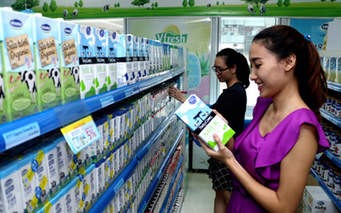 At the meeting with MPI, ministries of Finance and Justice, as well as the Government Steering Committee on Corporate Renovation and Development, Huệ asked the MPI to submit the list of SOEs to be divested by 2020 to Prime Minister Nguyễn Xuân Phúc for approval. He also assigned the Ministry of Finance to review and calculate the number of SOEs and State capital needed to be divested by 2020 and report it to the Prime Minister (PM). Huệ said that the PM will issue a separate decision on equitisation and divestment of State capital at large SOEs such as Habeco, Sabeco, State Capital Investment Corporation (SCIC), Petro Vietnam, Electricity of Vietnam and Airports Corporation of Vietnam (ACV). But for the remaining SOEs, it is necessary to fully aggregate them in a list to make public to ease investors. According to the PM’s instruction, the MPI has begun asking for recommendations from relevant ministries, agencies and localities about the list since early this year and has so far finalised the draft. Huệ agreed with the draft list which regulates the rate of divested capital each year (the minimum rate), but not fixing the rate and encouraging ministries and localities to increase the rate to speed up the divestment according to the market situation. "The list and the annual State capital divestment rate from now to 2020 is aimed at making a concrete assessment and binding heads of ministries and localities with their responsibilities. If they cannot do it, they must be accountable to the Government and the Prime Minister," Hue noted. According to MPI Deputy Minister Dang Huy Dong, a thorough list is necessary to help monitor and speed up the divestment at SOEs besides ensuring the collection from the State capital divestment to allocate the fund for medium-term investment projects. According to the MPI’s draft, the total number of SOEs (excluding enterprises belonging to the Ministry of National Defence, Ministry of Public Security, HCM City People’s Committee, SCIC and those divesting according to the PM’s separate decision) are 375 with total capital according to face value of more than VND108.5 trillion (US$4.76 billion). Of the SOEs, 161 will be divested in 2017 and the number for the next three years is 185, 65 and 25, respectively. Total divestment capital according to face value from 2017 to 2020 is expected to be nearly VND64.46 trillion. The draft also states that the divestment must be transparent, legal and according to the market mechanism. VNS |
↧
↧
Article 0
In Vietnam, excavator bucket ferries stranded villagers over swollen streamThe excavator was working on a roadway when local officials enlisted it to save the day 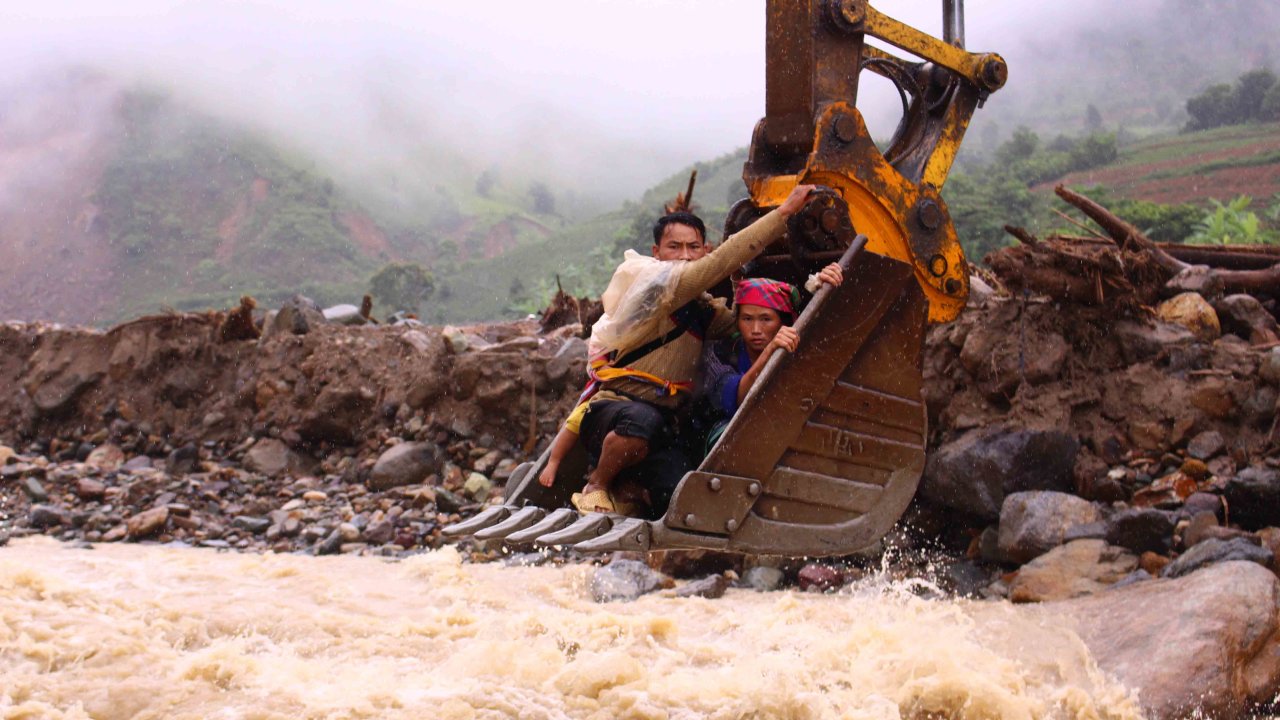 The family of local resident Vang A Tua is taken across the Nam Pam Stream in Muong La District, Son La Province in an excavator bucket, August Villagers in a mountainous province in northern Vietnam were shocked when an excavator showed up to help stranded locals cross a flooded stream. As villagers settled into the vehicle’s bucket, the steady excavator arm swung them safely across the fierce water below. The suspenseful event was captured by Tuoi Tre (Youth) newspaper reporters on Wednesday morning at the Nam Pam Stream in Muong La District, Son La Province. Vang A Tua, 21, a local villager, was among those stranded by the stream’s sudden surge caused by recent rains. With no bridge within walking distance, Tua had no choice but to continue his trek to the nearest hospital by crossing the rushing water with his ill wife and child. The family of three had begun their 30 kilometer trek on foot in the early morning, sloshing through heavy rains before reaching the impassible stream. Down the road, Nguyen Thanh Cong, Party chief of Muong La District, was overseeing the construction of a nearby road, when he heard local villagers were stranded on one side of the waterway. The official wasted no time in dispatching an excavator to the rescue. “The child was visibly wet and cold from being in the rain for so long. I couldn’t risk having them wait any longer since the child could get sick,” Cong said. “Getting them across in an excavator bucket was the optimal and safest option.” “It was scary, but I had to take my wife to the hospital,” Tua said after being safely transferred across the stream. Lo Van La, another local, said that he had just returned from a visit to his parents’ house on the other side of the stream and that it was the third time that day he had crossed the stream using the excavator. “The rapids would otherwise be too dangerous to cross on foot,” La said.
By Tuoi Tre News |
↧
Article 1
Tra fish exports steady after new US food safety rule Exports of tra fish to the United States have remained stable after it imposed a demand that exporting countries demonstrate that their food safety control system is equivalent to that of the US. 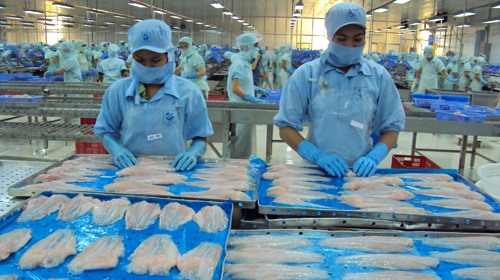 An announcement to this effect by the Vietnam Association of Seafood Exporters and Producers (VASEP) on Thursday has belied fears and reports that exports of the fish could be rejected or cancelled in the coming time. Reports of rejection or cancellation of Vietnamese tra fish exports “has no basis,” VASEP said in a note. It said that tra fish exports to the US had declined in the first quarter due to a shortage of raw materials, but recovered in the second quarter with an 8.4 per cent increase, thanks to rising demand and increase in supply of raw material. VASEP General Secretary Truong Dinh Hoe said while the equivalence process was not yet completed, it was prudent not to assume any possibility of Vietnam not passing such determination or speculate on suspension of ongoing exports. “During the 18-month transitional period, both sides have worked out co-operative approaches to common issues in question and US Food Safety and Inspection Service (FSIS) has also given close guidance on how to comply with its requirements,” Hòe said. He also said that while Vietnam’s tra industry is well developed with substantial and stringent food safety controls, he is concerned that an import discrimination policy by the US government may cause unfavorable and unfair decisions against Vietnam. “VASEP hopes that there will be solutions reached by the two governments not to disrupt free trade between the two countries,” the note said. In early July, the FSIS had announced that it would apply new import regulations for Siluriformes fish from August 2, instead of September 1 as stated earlier. Under the regulations, authorised agencies in the exporting country must submit to the FSIS documents to prove that its food safety control system is equivalent to that of the US. Following this, the Vietnam National Agro-Forestry-Fisheries Quality Assurance Department (NAFIQAD) has provided guidance on inspection requirements regarding labelling, detailed inspection content, testing parameters for chemicals residues and speciation to establishments eligible for exports to the US (as listed in https://www.fsis.usda.gov/wps/wcm/connect/eb3720e3-221c-4928-a018-028df5cc28b5/Vietnam_establishments.pdf?MOD=AJPERES) On August 15, the Ministry of Agriculture and Rural Development (MARD) launched Siluriformes Controlling Programme designed for Siluriformes fish and related products exported to the US market. The programme aims to demonstrate equivalence and minimise rejection of fish batches exported to the US, thus reducing costs for enterprises. Starting from September 1, 2017, the programme will apply strict supervision on all stages of fish farming, processing and exporting. Qualified products must satisfy 85 criteria of the US regarding veterinary medicine, 106 criteria on pesticides, four on dyeing chemicals, 17 on metals and eight in biochemistry. In case a fish batch attracts warnings from an authorised US agency, NAFIQAD will request the seafood processor to trace its origins and investigate why it failed to meet food safety requirements. The department will also halt the concerned facility’s Siluriformes fish export to the US, while handling its violations. NAFIQAD is also preparing a complete equivalence package to be submitted to FSIS on August 20, 2017. After that, FSIS will initiate the review process of the submitted documentation, and if the submission provides an initial basis for believing the country to be equivalent, FSIS will do an in-country audit. VNS |
↧
Article 0
Big brands see drop in revenue in more competitive market Amid an average 14.4 percent growth rate of listed companies, many enterprises have reported unsatisfactory business results, including strong brands with a long business history. 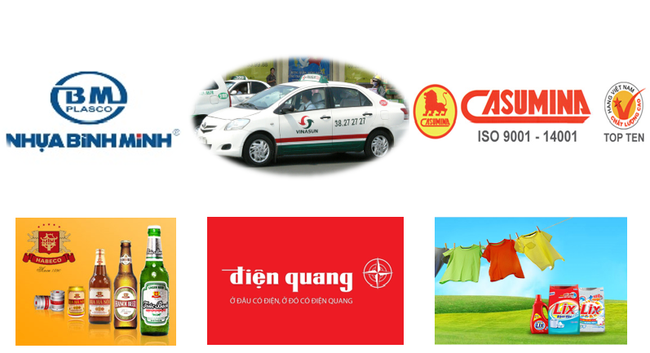 Vinasun, considered the godfather of the southern taxi market, saw a decline in profit after the appearance of Uber and Grab. In the first six months of the year, Vinasun’s revenue fell by 16 percent compared with the same period last year, while the pre-tax profit decreased by 32 percent. The profits mostly came from the sale of old cars. Caosumina (CSM), considered Number 1 in the tyre industry, has also shown signs of a slowdown. A representative of Casumina last April expressed concern about the fall from Number 1 position, saying that the profits might decrease because of competition from foreign products, especially from Thailand and China. In the first half of the year, though CSM had 13.6 percent growth in revenue compared with the same period last year, the company had difficulties amid input price fluctuations. The radial tyre factory has run at a low capacity, increasing production costs. CSM’s reported post-tax profit was VND47 billion only, much lower than the VND124 billion of the first half of 2016.
Dien Quang, one of the two leading manufacturers of lighting equipment and electric appliances, has also reported a drop in both revenue and profit: while the revenue decreased by 6.8 percent, the post-tax profit dropped sharply by 53 percent. Dien Quang has had difficulties in both export and domestic markets. LED lights, one of the major products, has had to compete with Chinese imports. Though it had to spend more on sales activities, the results remain unsatisfactory. Lix the detergent brand has reported a 18.5 percent profit drop, though revenue rose by 8 percent. The gross margin decrease was blamed on competition from Unilever and P&G. Habeco, in the southern beer market, still gained a 4.6 percent growth rate thanks to higher demand. However, Habeco had to spend VND233 billion, or double the same period last year, to speed up growth. Binh Minh Plastics, the leading plastic pipe manufacturer, reported a sharp decrease of 34 percent in post-tax profit, though revenue increased by 8.6 percent. The higher input material price has caused the cost price to increase by 17 percent. It has two big rivals – Tan A and Hoa Sen. M. Ha, VNN |
↧
Article 2
Van Don zone to be green, urban area The northern province of Quang Ninh plans to turn Van Don special administrative-economic zone into a smart and green island urban area, Nguyen Van Doc, secretary of the provincial Party Committee, said. 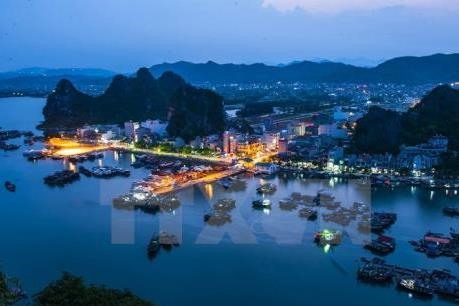 The zone, located in Van Don District, has a total land area of 581.13sqkm, a sea area of 1,620sqkm and a population of around 46,000. The district lies in a politically and economically important region, on the strategic transit route from East Asia to Southeast Asia and from ASEAN to China, in the Vietnam-China “two corridors, one belt” co-operation area, in the Nanning-Singapore economic corridor, and in the extended Tonkin Gulf inter-regional co-operation area. Van Don is one of the three special administrative-economic zones designated by a government-approved plan; the other two are Vân Phong in the central province of Khanh Hoa and Phu Quoc in the southern province of Kien Giang. These zones will pilot key new economic and administrative policies before they are applied nationwide, to develop the maritime economy. Quang Ninh is working on a master plan of Van Don zone as well as specific laws for it. The province aims to develop Van Don into a dynamic economic centre with focus on services, high-end tourism and high-tech industries. The zone is expected to become a centre for start-ups, innovation and international trade. The zone will apply an environment-friendly development model with streamlined administrative apparatus and competitive policies in order to tap distinctive local potentials to the fullest, and to attract investment and talent. The zone is expected to spearhead the province’s growth, consolidating Quang Ninh’s position as a leading economy in the northern region, while ensuring national security. The Van Don master plan will define the local advantages with a view to pinpointing goals and priorities for development, draft a long-term development strategy for the zone, and propose management models. Recently, the province organised a conference in France for advice from the Association of Vietnamese Scientists and Experts (AVSE) on the master plan, and invited Kien Giang and Khanh Hoa provinces to a workshop on the special administrative-economic zone master plan. The province hopes to put forward new mechanisms and policies for the zone to give it a competitive edge internationally. The province will hire foreign consultants to draw up the socio-economic development plan for the zone and revise the blueprint for Van Don economic zone to suit the new status as a special administrative-economic zone as directed by the Politburo at Conclusion No 21-TB/TW on March 22, 2017. A line-up of huge domestic groups such as the Sun Group and FLC have been pouring investment into Van Don District, including Van Don International Airport, Van Don luxury resort-entertainment complex and casino, and other high-end resorts. The master plan and laws for Van Don special administrative economic zone are scheduled to be submitted for consideration at the National Assembly’s fourth meeting in October. VNS |
↧
↧
Article 1
Big real estate developers pour money into Ha Long Quang Ninh province still has no large-scale resorts, even though Ha Long Bay in the province is a popular tourism destination. 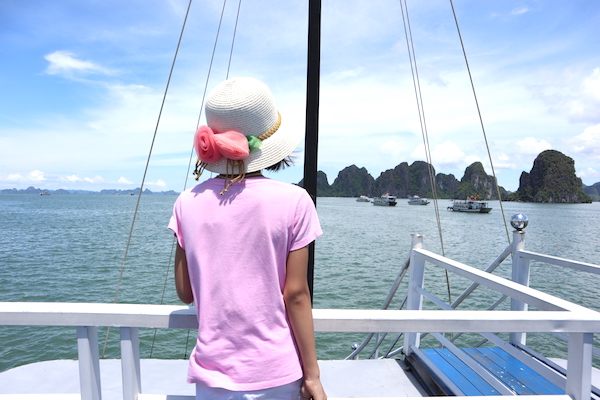 One out of every three foreign travelers to Vietnam visits Ha Long Bay, but most of them travel from Hanoi and spend one night on boats before returning to Hanoi. There are not many well-known hotel brands in Ha Long, except Novotel and Wyndham. However, an analyst said that Quang Ninh is more attractive in travelers’ eyes than Da Nang, but is inferior in terms of tourism real estate. Quang Ninh last year received 8.3 million travelers, including 3.5 million foreign travelers. Da Nang attracted 5.5 million travelers, while the number of foreign travelers was less than half of that of Quang Ninh.
However, Quang Ninh only has 5,651 high-end 3-5-star hotel rooms, just half of the number in Da Nang. Most high-end hotels in Quang Ninh are located in Ha Long City, including four 5-star hotels with 1,260 rooms in Bai Chay. The number of 4-star hotel rooms is 2,772 rooms, while there are 1,179 3-star hotel rooms. While there are tens of condotel projects in Da Nang which provide 15,000-17,000 accommodations, there is only one project of this kind – Citadines with 637 apartments, in Quang Ninh. Meanwhile, New Life and Green Bay are apartments for sale and are available for lease, but don’t operate as hotels. Da Nang is also superior in terms of high-end villas. Da Nang has Furama Villas, Premier Village, Hyatt, Vinpearl and Ocean Villas, while Quang Ninh has Royal Lotus. Quang Ninh has licensed a high number of large tourism real estate projects, including Ha Long Star with registered capital of $500 million. However, the villa area, houses and high-end hotels of the project remain on paper, though the project kicked off in 2008. However, observers said Quang Ninh will have a new face just in several years. After the provincial authorities poured money into transport infrastructure, big investors flocked there to develop real estate projects. In 2015 alone, the total investment in infrastructure projects there was approximately VND100 trillion. A number of real estate projects have been developed in Quang Ninh, namely Vinhomes Dragon Bay (VND12 trillion), Marina Ha Long ($2 billion), SunWorld Ha Long Park (VND7.8 trillion), FLC Ha Long (VND3.4 trillion), Mon Bay Ha Long (VND5 trillion) and Vinpearl Ha Long. Kim Chi, VNN |
↧
Article 0
Bui Vien Walking Street to officially debut tonightVisitors can now have a much more enjoyable experience on the most popular street in Ho Chi Minh City’s ‘backpacker area’ 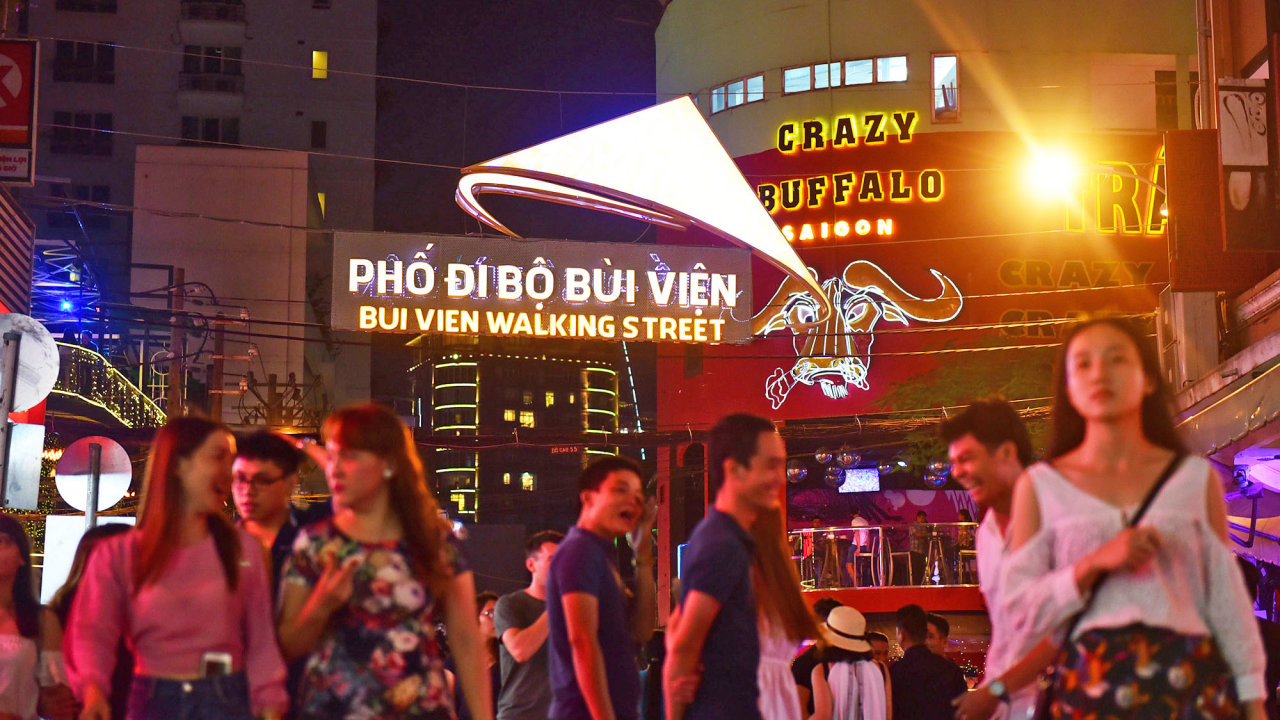 People take a stroll on Bui Vien Street in District 1, Ho Chi Minh City on the night of August 19, 2017. Photo: Tuoi Tre Following over a month of delay, Bui Vien Walking Street in Ho Chi Minh City’s ‘backpacker area’ is set to have its grand opening tonight, August 20. Located in Pham Ngu Lao Ward, District 1, the city’s newest pedestrian street is scheduled to debut on Sunday night, offering local residents and tourists a wide variety of entertainment activities. The promenade stretches 850 meters long from the Bui Vien intersection with Tran Hung Dao-Nguyen Thai Hoc Streets to Cong Quynh Street. During the opening night, two stages will be set up in front of 33 and 204 Bui Vien Street for a series of artistic performances, alongside such activities as street cuisine, sports, and folk games. Since July 15, the People’s Committee in District 1 has piloted a vehicle ban from 7:00 pm to 2:00 am on weekends, while the renovation of sidewalks along the road had also been carried out. Additional efforts will be exerted to upgrade the alleys located within the walking street to create a greener, cleaner, and more esthetic urban face. Residents and businesses along the section of Bui Vien Street have expressed their support for the project, many of whom stated that their revenue had increased by 50 percent thanks to the vehicle ban.
According to Le Tan Dat, chairman of the administration in Pham Ngu Lao Ward, business activities on Bui Vien Street are bustling both day and night. While diners, coffee shops, clothing stores, and souvenir shops are open to customers in the morning and afternoon, restaurants, bars, and pubs bring a more dynamic atmosphere to the street from the evening until midnight. Foreign visitors have dubbed the destination a ‘cheap beer area,’ ‘busy street,’ or ‘backpacker land,’ Dat said, adding that establishing the walking street would help preserve its uniqueness and better manage local business activities. A total of 146 businesses are operating on Bui Vien Street, said Nguyen Thi Thu Huong, vice-chairwoman of District 1. Among them are 23 hotels, 25 diners, 15 coffee shops, 33 souvenir, handicraft, and clothing stores, 14 pubs, nine beer bars, 12 salons, eight travel agents, and some other facilities.
Opening specialized streets has been an emerging trend in Ho Chi Minh City, improving trade and services as well as creating distinctive tourism products. In District 5, jewelry streets were introduced in April 2017 and streets specialized in eastern medicine were opened in December 2016. Businesses in these areas reported a 20 to 50 percent increase in revenue and many opportunities to offer their products to domestic and foreign tourists. In late April 2015, Nguyen Hue, the city’s first walking street, was open to visitors and has become a favorite hang-out spot for both locals and tourists. Nguyen Van Binh, the city’s book street, has also been a regular stop for local book lovers and enthusiasts. 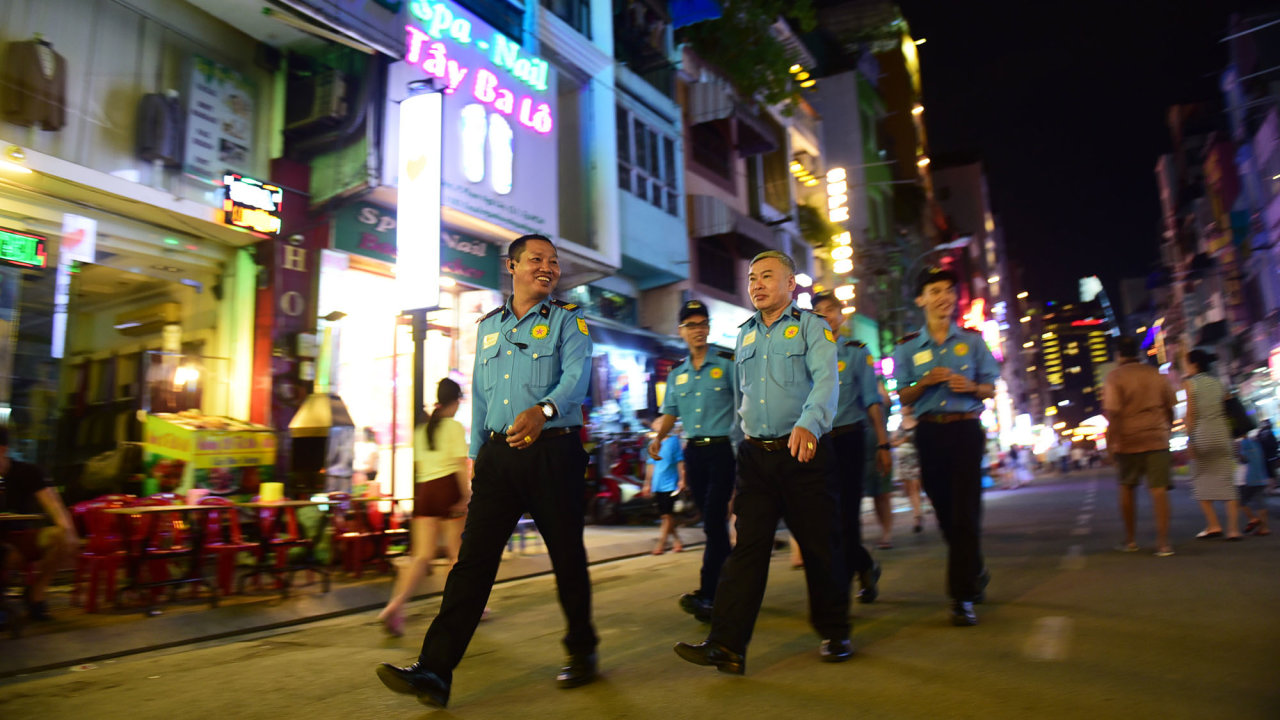 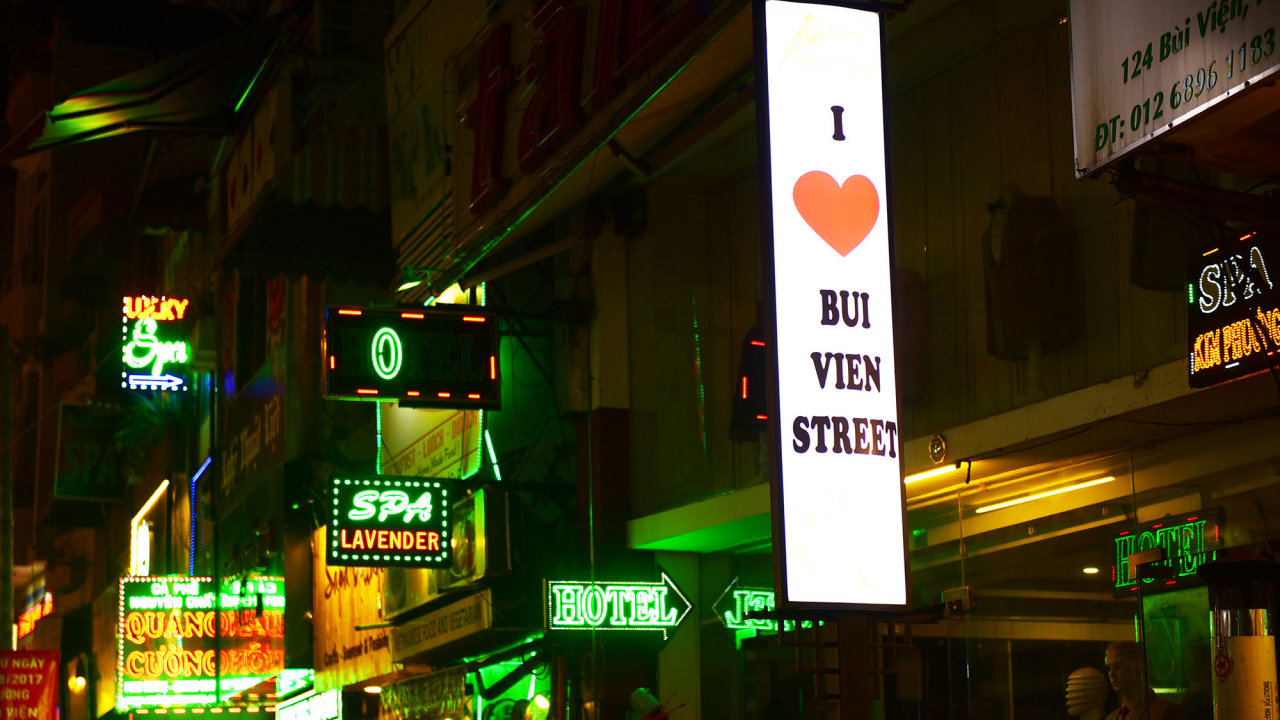 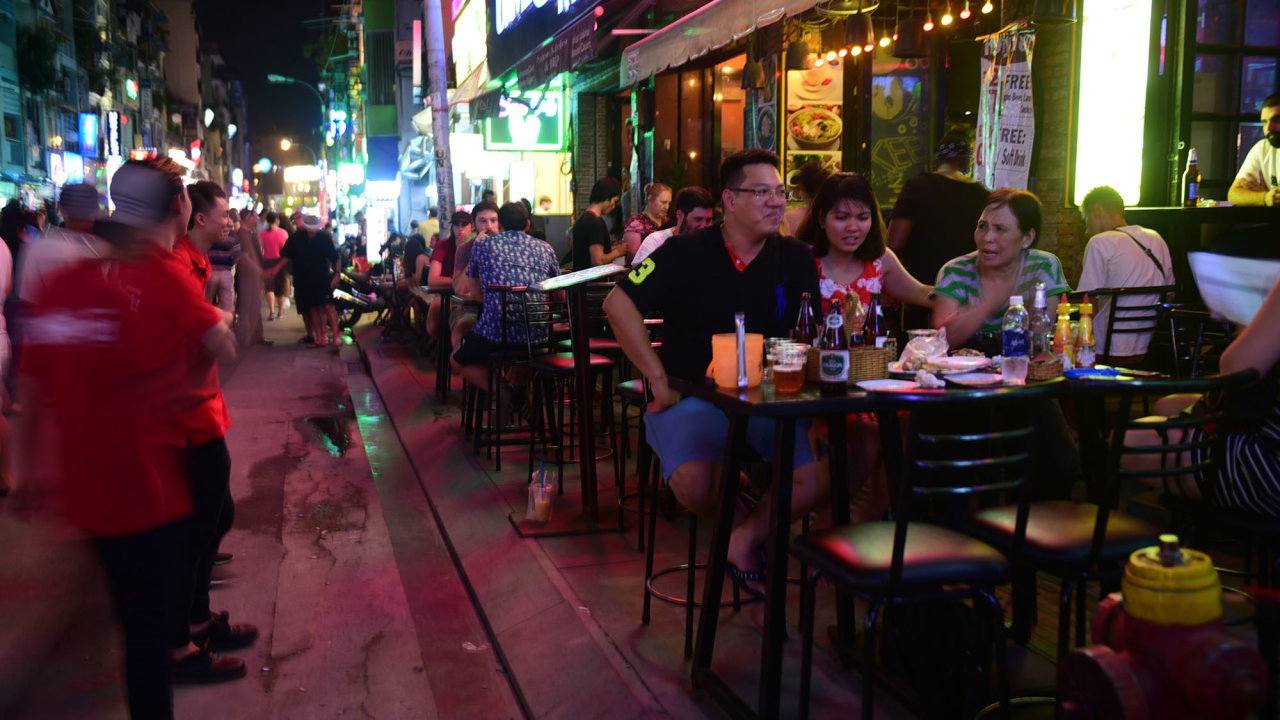 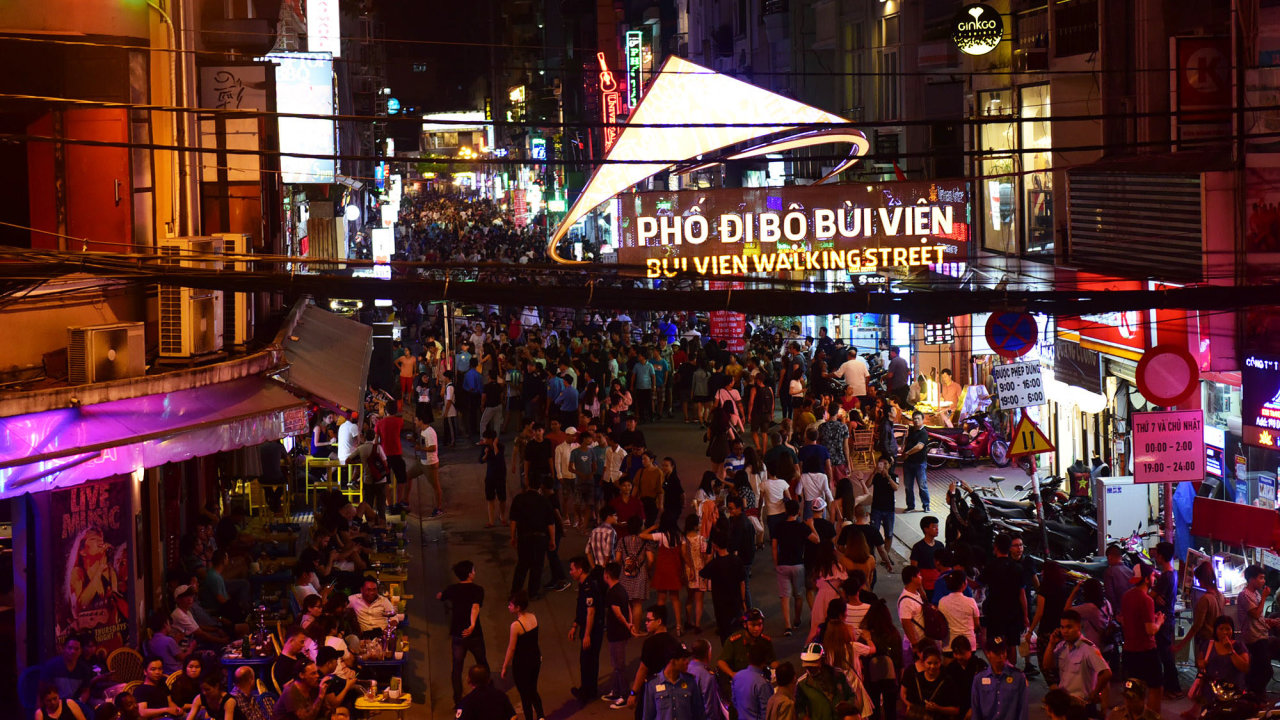 By Tuoi Tre News |
↧
Article 3
FDI from tax havens poses risks to economy The cash flow from tax havens is often risky, especially without adequate technical and tax barriers, say analysts. 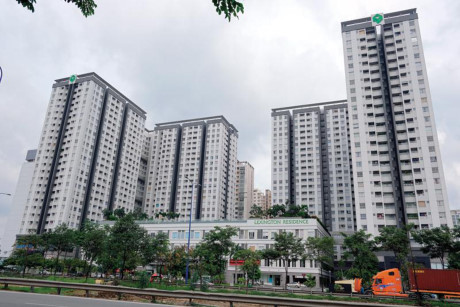 Bizlive cited a report from the Foreign Investment Agency (FIA) as showing that the British Virgin Islands alone registered $1 billion worth of FDI in the first seven months of the year, raising its total accumulative investment capital to $21.4 billion, ranking fifth among countries and territories with the highest FDI in Vietnam. Analysts noted that the $1 billion includes $850 million through capital contributions and stake purchases, a kind of investment foreign investors have favored recently. British Virgin Islands is the biggest foreign investor in this investment mode. The British Virgin Islands is one of the tax havens about which Oxfam has issued warnings. Many investment funds and businesses from British Virgin Islands have made big investments in Vietnam. These include Dragon Capital, the fund that has poured billions of dollars into large enterprises such as Vinamilk, Vietjet and Novaland. Most recently, Dragon Capital became a big shareholder of Ban Viet Securities Company and injected money into PNJ, a jewelry company.
Besides Dragon Capital, many other large foreign investment funds including Vietnam Asset Management Ltd, PXP Vietnam Asset Management Ltd and Vietnam Holding Asset Management Ltd have registered their investments in Vietnam with addresses in British Virgin Islands. And so have international conglomerates P&G and Intel. FIA’s report also shows big investments from other tax havens like Singapore, Hong Kong, Cayman, Bermuda, Panama, Luxembourg and Bahamas. In the first seven months of 2017, investors from Singapore registered $3.8 billion worth of FDI, Hong Kong $885 million. The former has invested $41.6 billion in Vietnam so far, while the latter $17.3 billion. The figures are $6.6 billion for Samoa and $6.3 billion from Cayman Islands. Dau Tu quoted an Oxfam report as warning that if Vietnam doesn’t have reasonable management policies, profits from investments from tax havens may not be retained in Vietnam. Lawyer and economist Bui Quang Tin, CEO of BizLight business school, commented that the transfer pricing skills in tax havens are very good, while Vietnam’s capability is limited, while loopholes exist in the legal framework. Tin said in an open market which operates with trade rules, Vietnam cannot refuse investments from other countries, including tax havens. But it it cannot control investment flows, it will incur consequences, including loss of revenue from tax collections and, when transfer pricing cannot be discovered and punished, a distorted business environment. Kim Chi, VNN |
↧
Article 2
SCG reaffirms determination to develop $5.4 billion Long Son petrochemical complex Siam Cement Group (SCG) has signed a Memorandum of Understanding (MoUs) with PetroVietnam, aiming to reinforce the development of Long Son petrochemical complex (LSP) in the southern province of Ba Ria-Vung Tau.  At the signing ceremony, another MoU was signed between SCG chemicals and PetroVietnam’s subsidiaries on exploring new opportunities together with a potential collaboration in petrochemical business in the future. Positioned as Vietnam’s first petrochemicals complex, LSP will be an important supplier for the manufacturing industry, which will support Vietnam’s industrial and economic development. The construction of the $5.4-billion Long Son petrochemical complex will resume before the end of this year. It will be installed with advanced technology, meeting environmental protection requirements and ensuring the production of high-quality products, such as PP and PE. The project will create about 15,000-20,000 jobs during its construction and over 1,000 jobs when put into commercial operation. The total olefins capacity is up to 1.6 million tonnes per year. The highlight of this project is the LSP technology featuring proven processes from leading world-class licensors. SCG, one of the leading conglomerates in the ASEAN region, comprises of three core businesses: SCG Cement-Building Materials, SCG Chemicals, and SCG Packaging. With more than 200 companies under its umbrella and approximately 57,000 employees, SCG creates and distributes innovative products and services that respond to the current and future needs of consumers. SCG began operation in Vietnam in 1992 with trading business and gradually expanded investments to diversified businesses in the cement-building materials, chemicals, and packaging industries. Today, with a total of 23 companies across Vietnam driven by approximately 8,300 employees, SCG offers a variety of premium products and services. Available products in cement-building materials include concrete roofs, fiber cement boards, fiber-cement wood substitute products for floor and ceiling, white cement, and ready-mixed concrete under the SCG brand. VIR |
↧
↧
Article 1
Fake alcohol rampant in HCM City The yeast and many other chemicals to make spirits have no origin or label but they are sold widely at markets in HCM City. 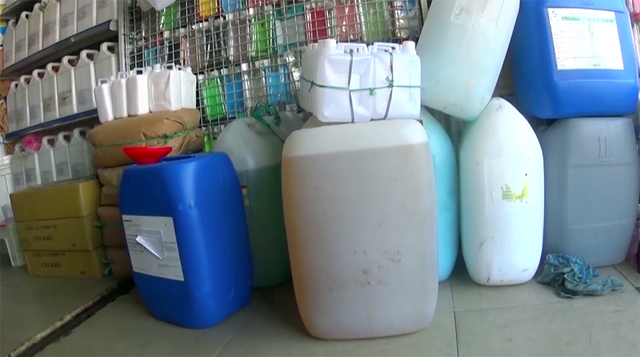 The yeast is sold at a chemical store for a price of VND40,000 (USD1.76)per kilo. According to a motorbike taxi driver, because the police are carrying out many inspections, the stores now only sell to regular customers. Another store in Binh Tay Market said they had various types with prices ranging from VND40,000 to VND70,000. "A kilo of yeast can make 40 litres of spirit. Just mix the yeast with water, whatever water you want. You can buy aroma chemicals to make it taste more like famous spirits," the seller said. The motorbike taxi driver said most of them were cheap chemicals from China and likely to cause great harm to the consumers. "Buy it for experiments but don't make spirits for sale, it's unethical. Most of the buyers are poor people. It's dangerous," he said. The yeast and many other chemicals to make spirits have no origin or label. Nguyen Nhu Hai, a traditional spirit seller, said there were four required basic steps in the spirit making and depending on the types of spirit that the time of distillation can last from 30 to more than 100 days. He went on to say that fake spirit was not only harmful to the consumers but also to the traditional spirit making industry as some stores are selling thousands of litres of fake spirits. "A traditional spirit store can only supply a few hundreds of litres per month, not thousands of litres like major factories," he said. "The fake spirits have a very strong smell and will shock the consumers. It will evaporate and lose the aroma quickly if it is poured down the ground." Doctors and experts also advise against fake spirits as most of them contain methanol which can cause severe poisoning reactions such as nausea, hard breathing and possible acute kidney failure, blindness or brain death. Dtinews |
↧
Article 0
Vietnamese businesses in pursuit of entry into Thai consumer marketLocal businesses will have to meet various requirements to achieve success 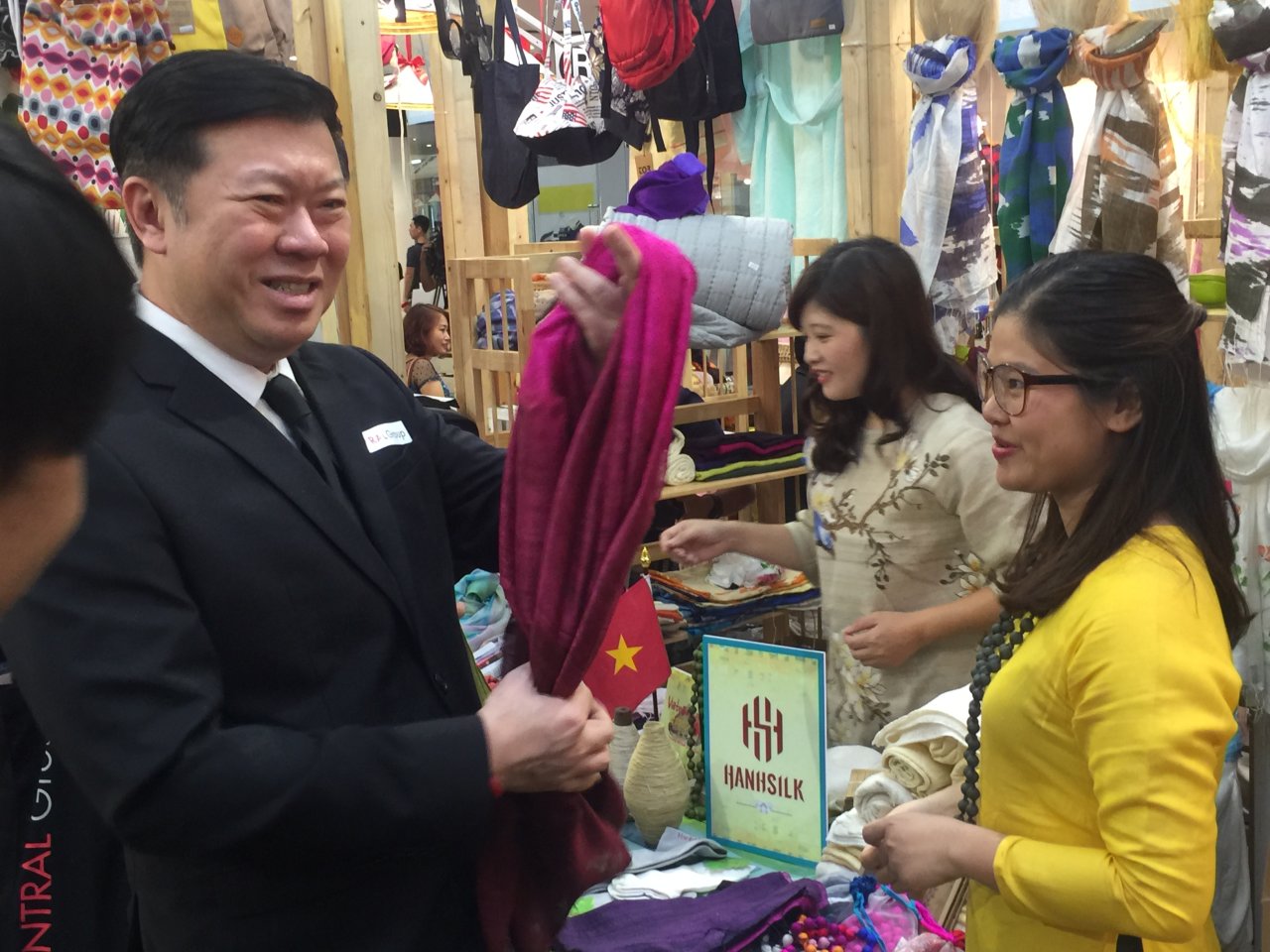 A Thai customer shows interest in made-in-Vietnam silk scarves. Photo: Tuoi Tre Vietnam has been facing many challenges introducing local products to its neighbor, Thailand. While made-in-Thailand merchandise is increasingly consumed by the Vietnamese market, the situation is not very positive the other way round. Many widely popular products in Vietnam seem unfamiliar to Thai consumers as they have only been imported and sold in small quantity by intermediate businesses and merchants. To settle the issue, an event named ‘Vietnamese Product Week’ has recently been organized in Bangkok, with the participation of over 40 brands from Vietnam. At the stall of Vinamit, a Vietnamese agricultural product company that has operated since 1988, Jiratha, a Thai buyer, was having a taste of the firm’s dried fruit samples and could not stop complimenting their flavor and crunchiness. Jiratha recounted trying the food during her previous trip to Phuket. As she was impressed with the quality, the Thai consumer has been looking for the product, to no avail, after she returned to Bangkok because it is not widely sold in the city. According to Vu Thanh Truc, international business manager of Vinamit, this is the first time the company has introduced its goods to the Thai market. Its merchandise was previously imported and sold by local merchants at airports and railway stations in Thailand, Truc elaborated. “We are confident that our advantages in taste and quality can compete with similar merchandise in Thailand,” the representative asserted. Like Vinamit, other Vietnamese businesses said they had been shying away from entering the Thai market due to the lack of knowledge of local consumers’ preferences and distribution systems. Bui Thi Ngoc Tuyen from the import-export department of Bich Chi Food Company said her enterprise had only been working with their Thai partners via an intermediary. During the event, Nguyen Xuan Ton, director of Long Trieu Coffee Company, has spent his free time exploring the trend at coffee shops in Bangkok, discovering that Vietnamese coffee is offered at many locations. “Given the potential market, all we need to do is complete other phases such as pricing and packaging,” Ton said.
Originality In order to make a deal with partners in Thailand, a Vietnamese business has to undergo several stages of negotiation and quality assurance to meet local standards. However, such procedures are considered a small challenge, Tran Thanh Hai, vice-president of Central Group Vietnam, said, adding that product originality is more essential. Agreeing with the opinion, Dinh Thi My Loan, secretary-general of the Association of Vietnam Retailers (AVR), said Vietnam and Thailand share many similarities in such merchandise as agricultural products, consumer goods, and packaged foods. For a successful entry into the Thai market, products from Vietnam must have distinctive features in terms of quality, packaging, and distribution, Loan stated. According to Vu Dao, director of Phong Son Tiem Company, which had exported two metric tons of lychee sourced from the northern Vietnamese province of Bac Giang to Thailand, Vietnamese lychee is tastier and sweeter than its Thai counterpart, though the two countries share the same lychee season. “The two metric tons accounted for just one-tenth of our original goal. We need to be more persistent to extend operations to this market,” Dao continued. The firm previously had to meet a series of qualifications before exporting the fruit to Australia, he said, adding that such requirements also apply to the Thai market.
By Tuoi Tre News |
↧
Article 1
Foreigners to be allowed to own houses in VN for up to 99 years On August 2, the Government Standing Committee met to discuss the proposed law on special administrative-economic units and changes in the land law concerning foreign ownership of property. 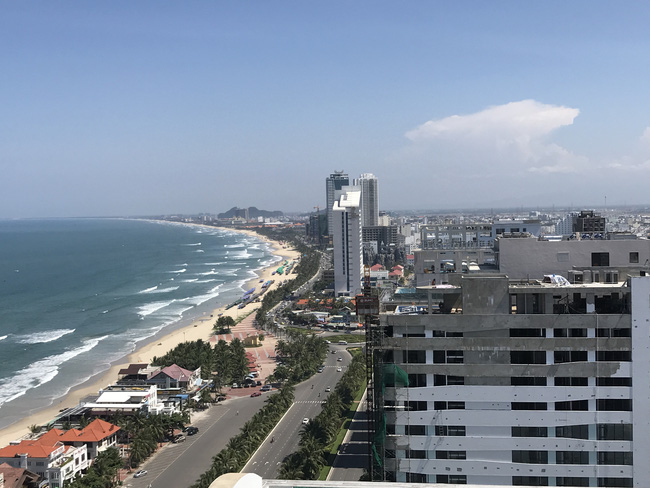 Prime Minister Nguyen Xuan Phuc has said it is necessary to create a special legal framework to attract investment in special zones. A draft law will allow foreigners to own houses for up to 99 years and allow mortgaging of assets associated with land-use rights at foreign credit institutions, which is in line with the 2013 Constitution. Nguyen Manh Ha, chair of the Vietnam Real Estate Brokerage Association, that the ownership time limit of 99 years is not a new regulation. Under Decree 99/2015, foreigners can own houses for 50 years and have the right to an extension of no more than 50 years.
The difference between the current regulation and the new law to be enacted is that foreigners will not have to ask for an extension to own houses for 99 years. Ha said this shows the government of Vietnam’s strong determination to pave the way for attracting investments into economic zones. The policy would create best conditions for expats in Vietnam to access houses more easily. However, very few banks are willing to help foreigners follow necessary procedures to buy properties in Vietnam. Thus, there is a need for closer coordination between government agencies and credit institutions as well as project developers in attracting home buyers in Vietnam. South Korea once restricted foreigners’ house purchases, but after the financial crisis, it allowed foreigners to buy houses. Indonesia allows foreigners to own property in the country for up to 80 years. However, the policy has little influence on Indonesian real estate market, because only those who have work visas and permanent work permits can buy houses in the country. Vietnamese laws are more open than other countries in allowing foreigners to buy houses. Foreigners can buy houses and then transfer to others. This will have an impact on the domestic real estate market, as it will stimulate investment and the desire to own property in Vietnam. Despite some problems still in the legal framework, more and more foreigners are registering to buy houses in Vietnam. An analyst noted that the real estate projects developed by Japanese and South Korean investors receive high attention from Japanese and South Korean citizens. M. Ha, VNN |
↧
